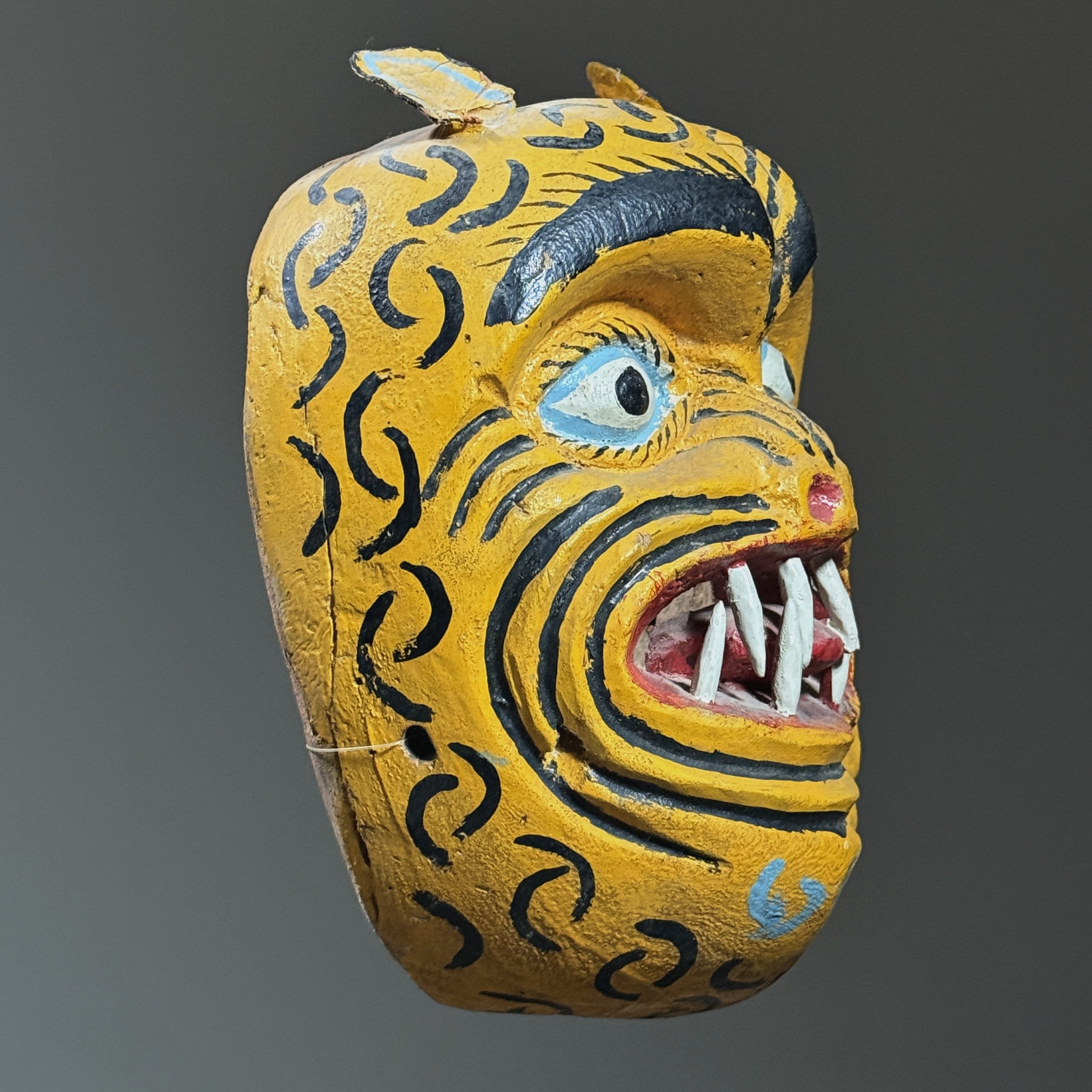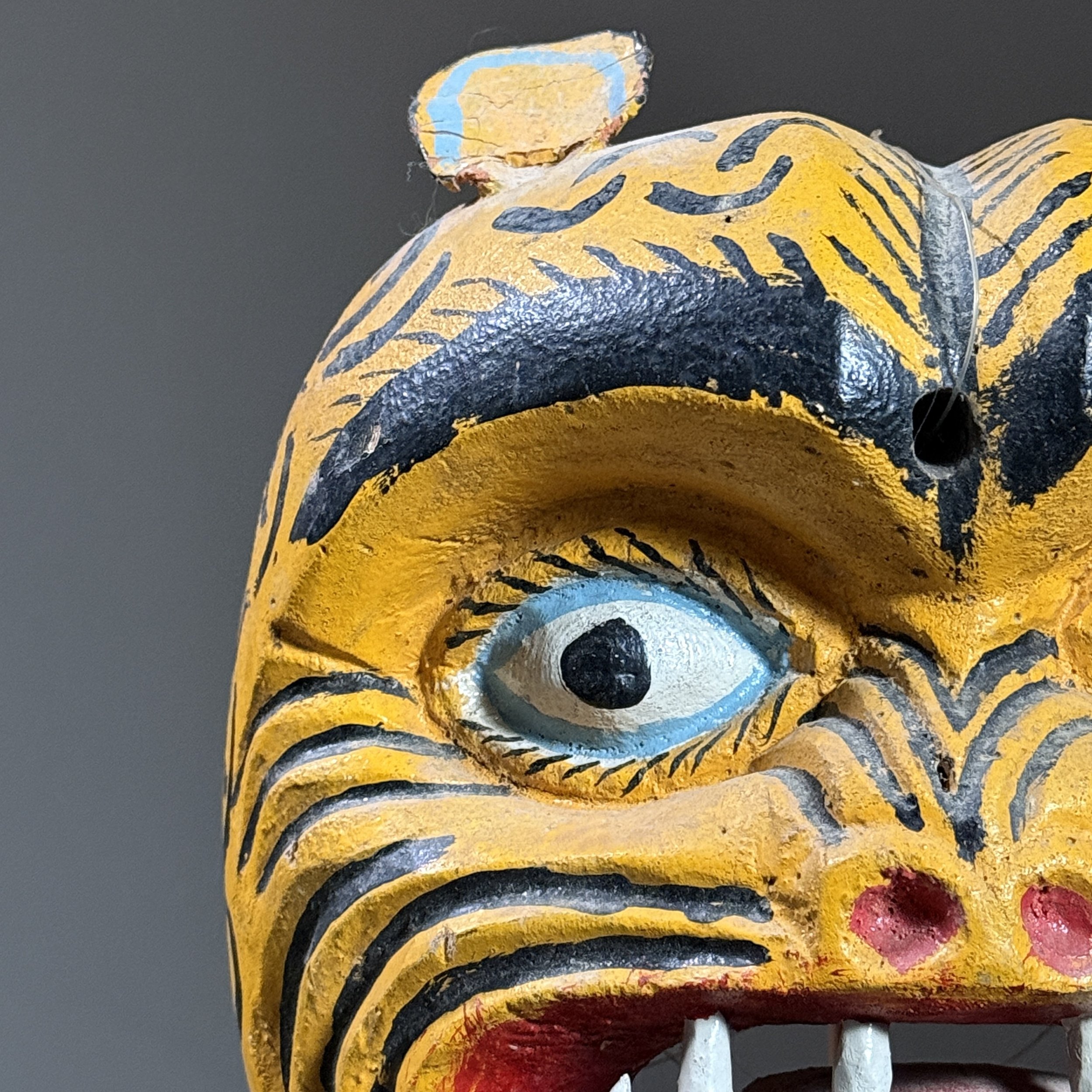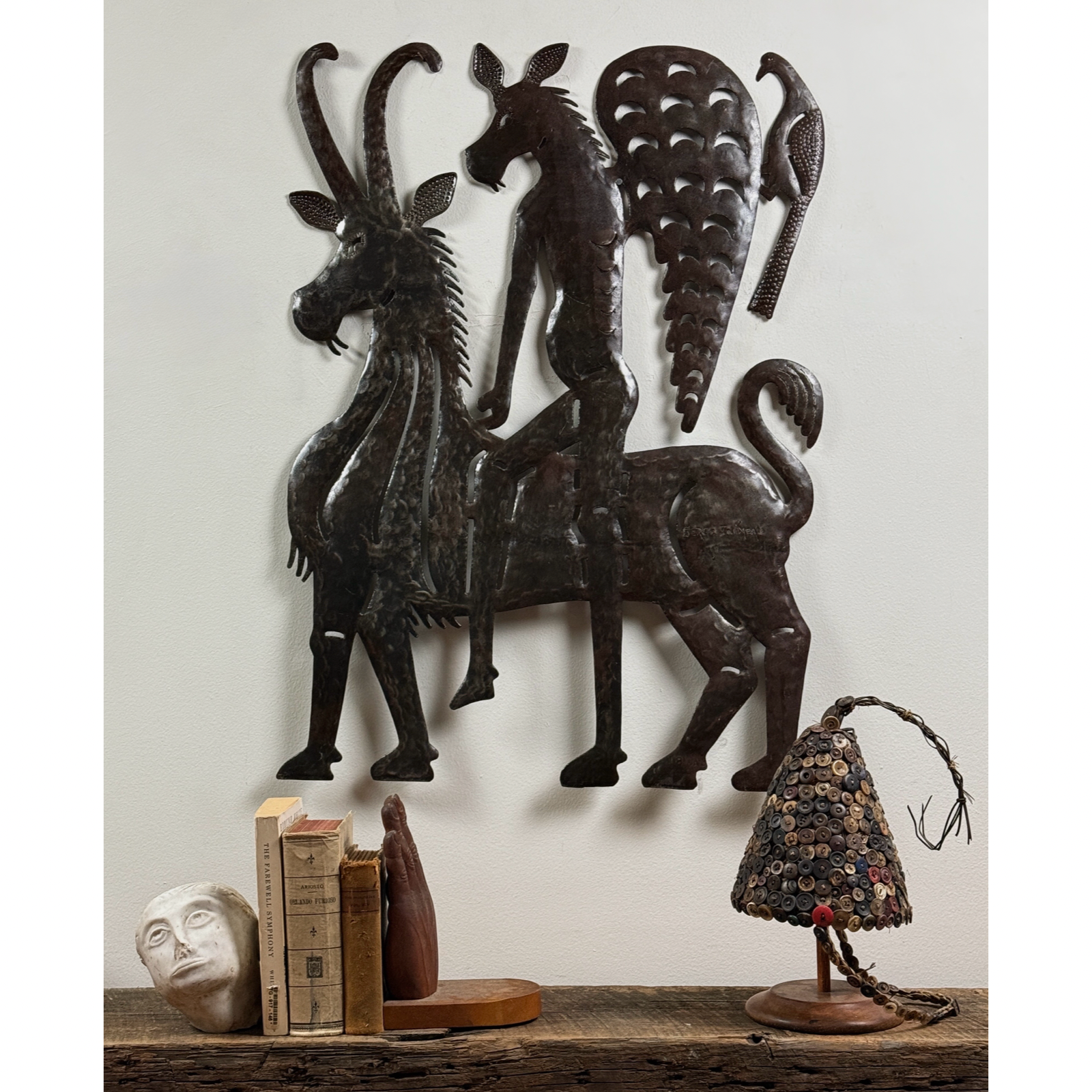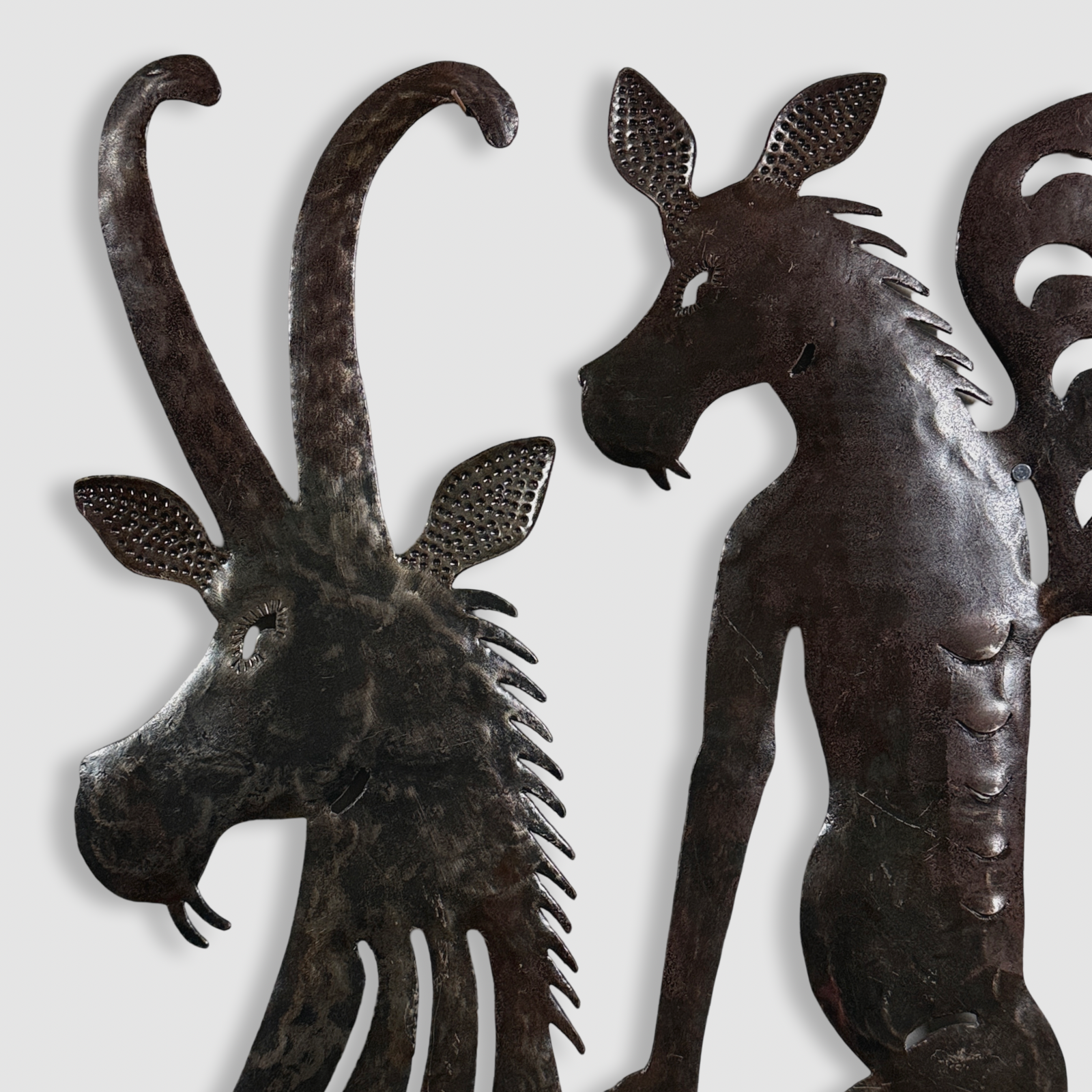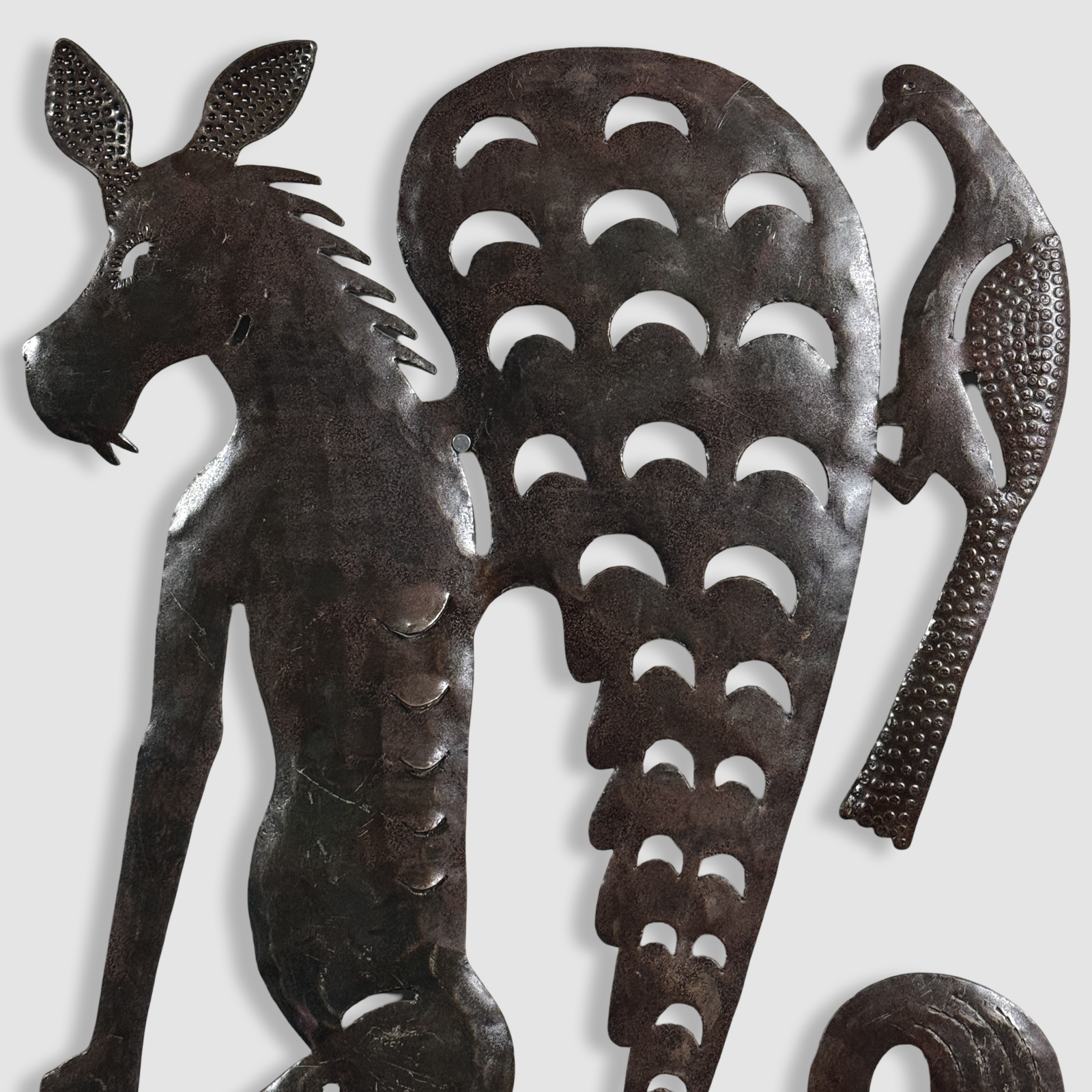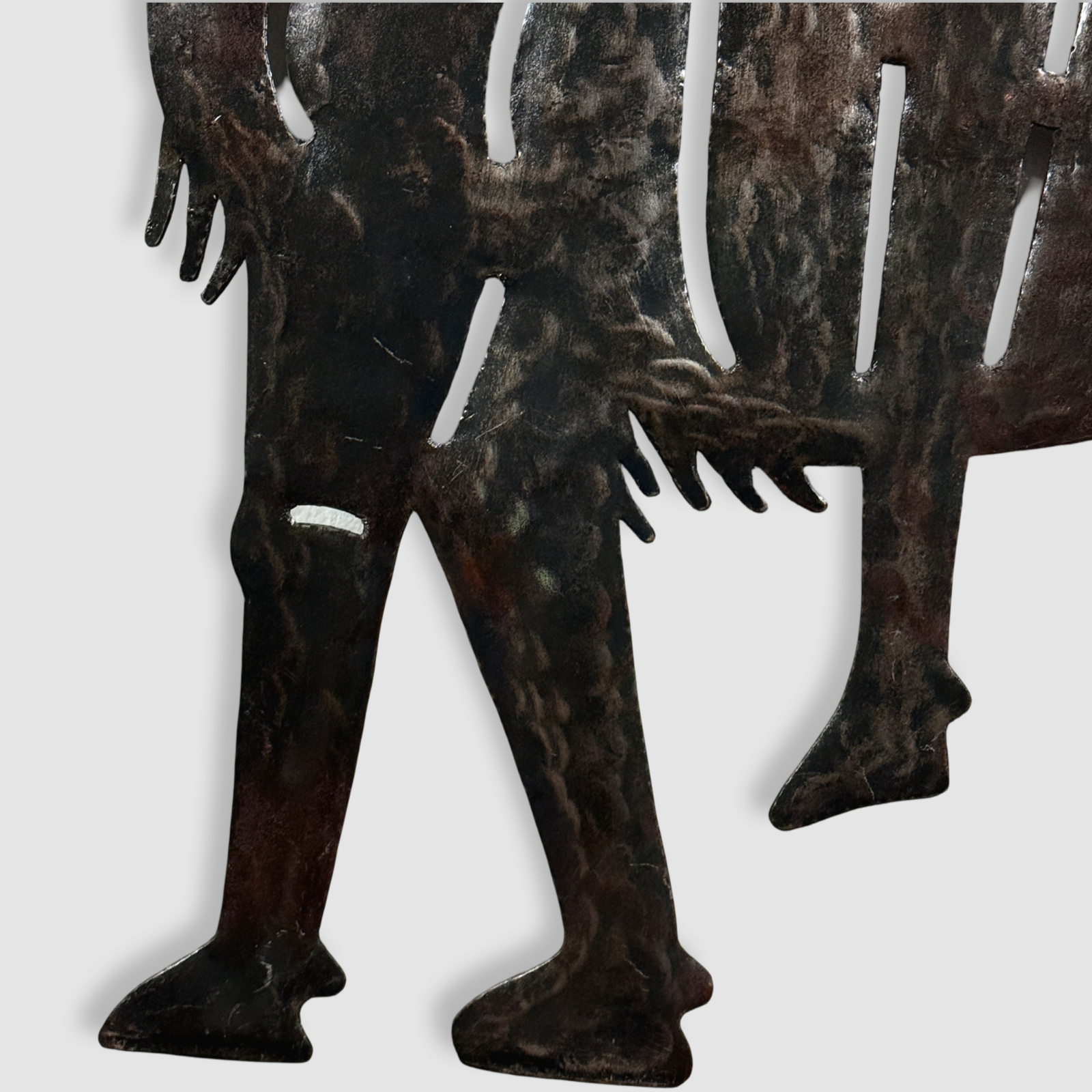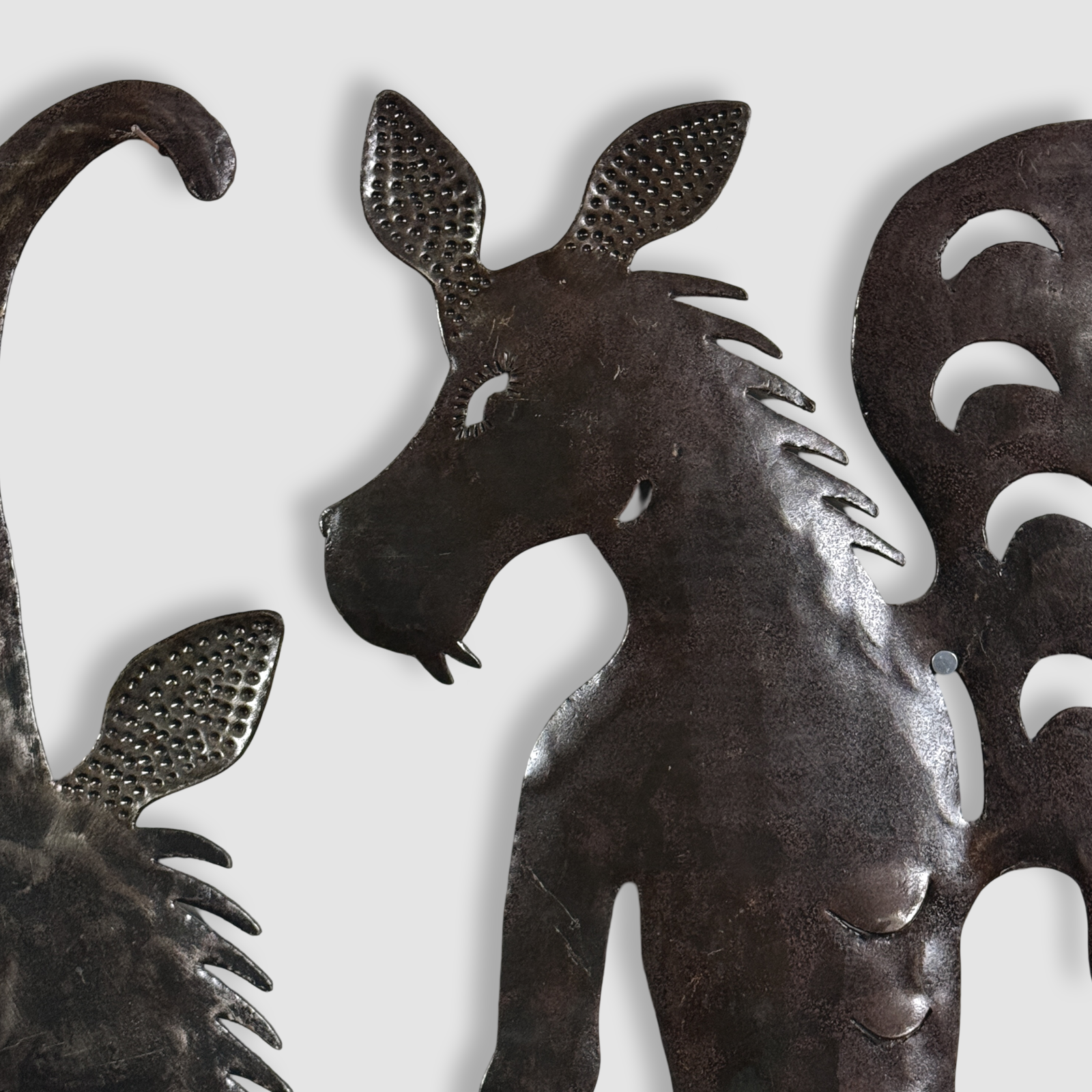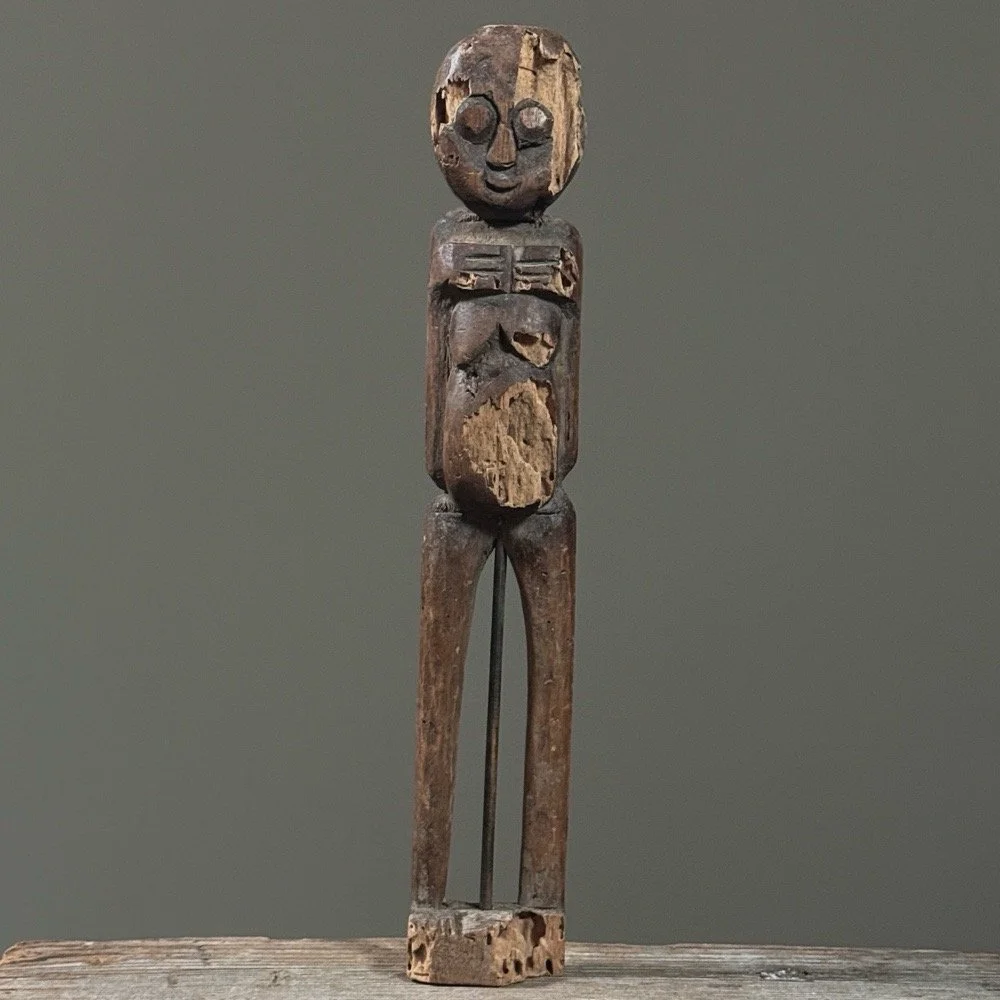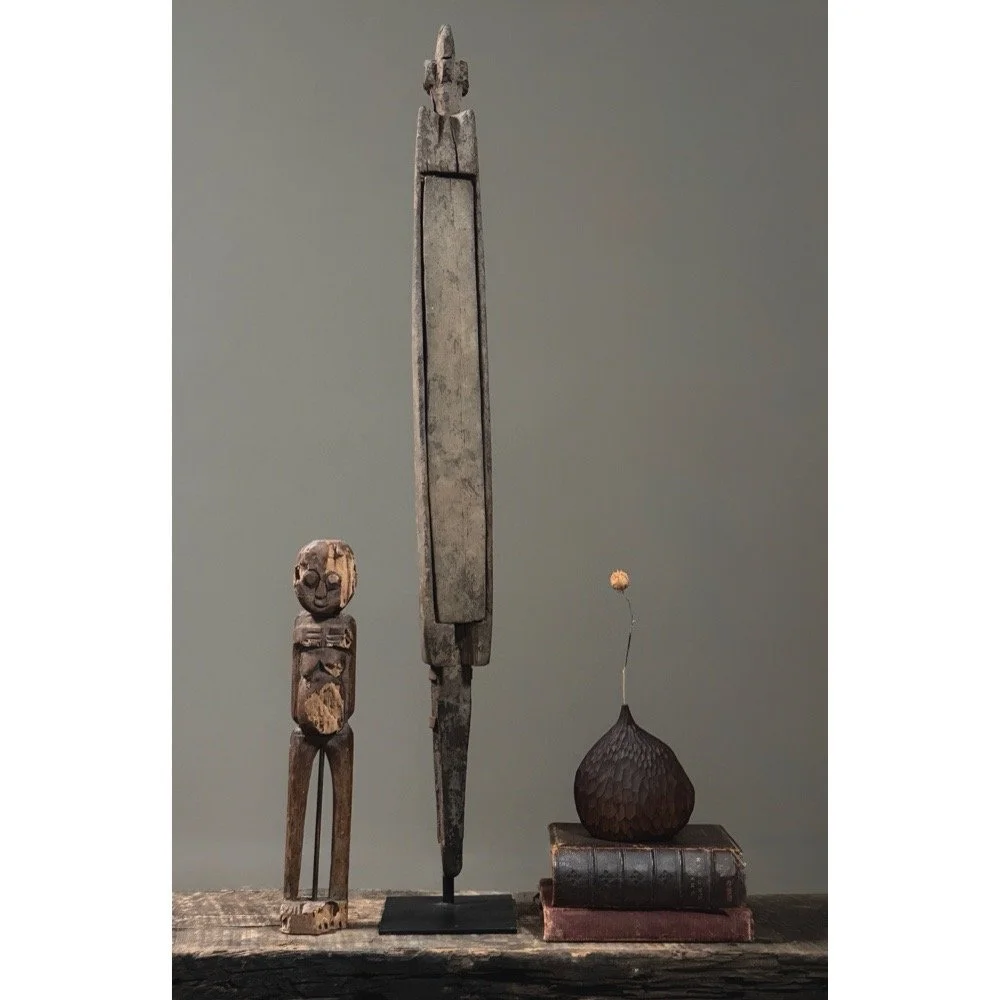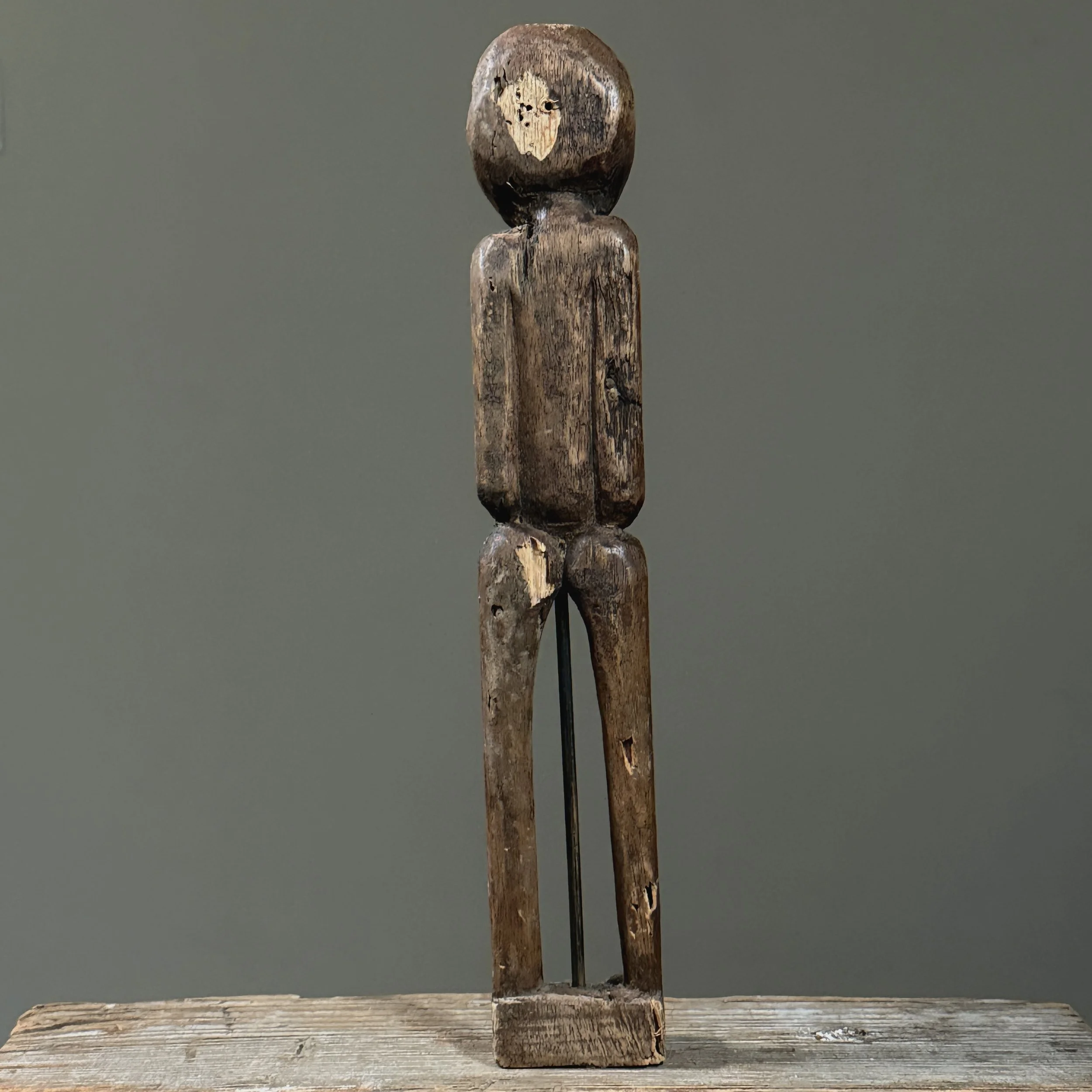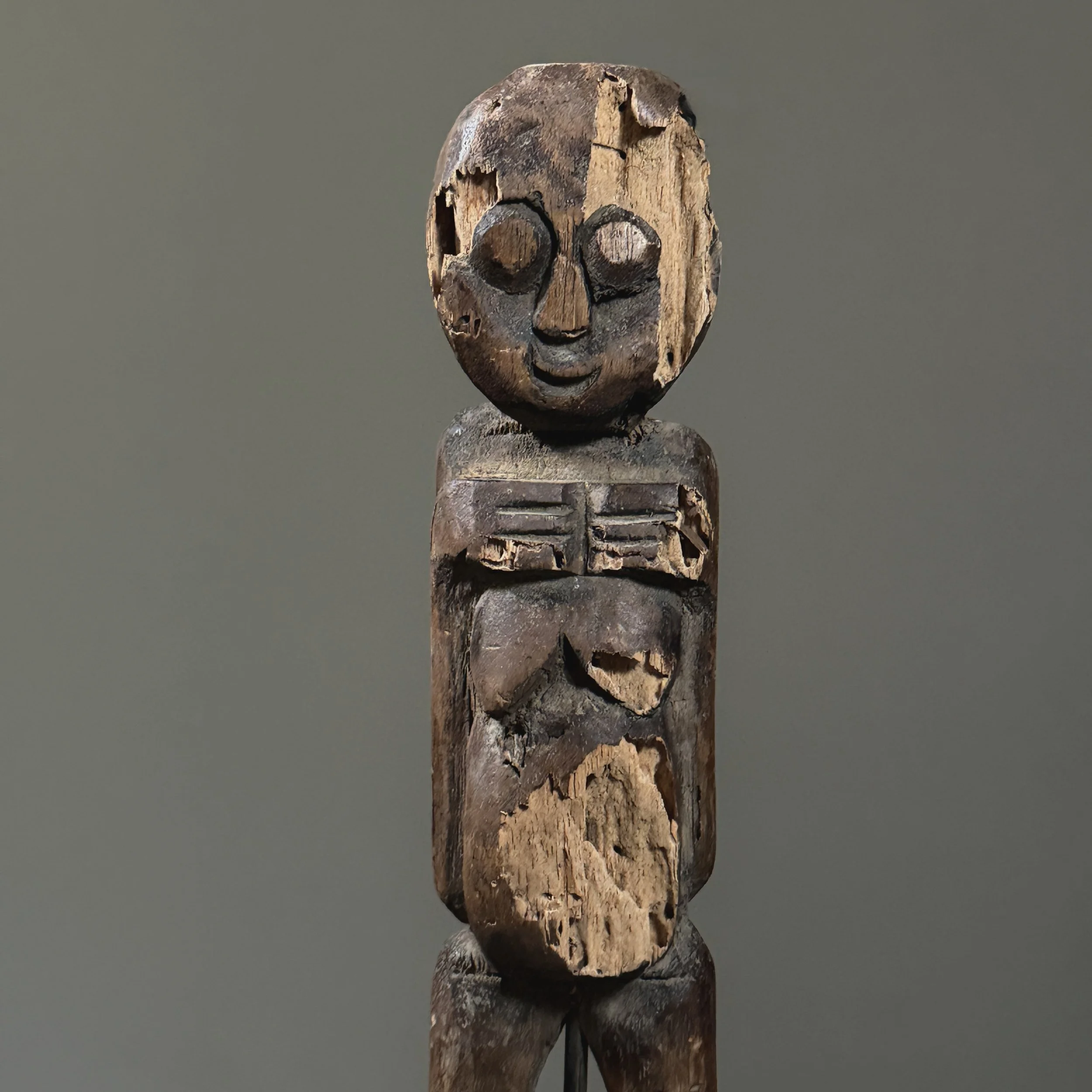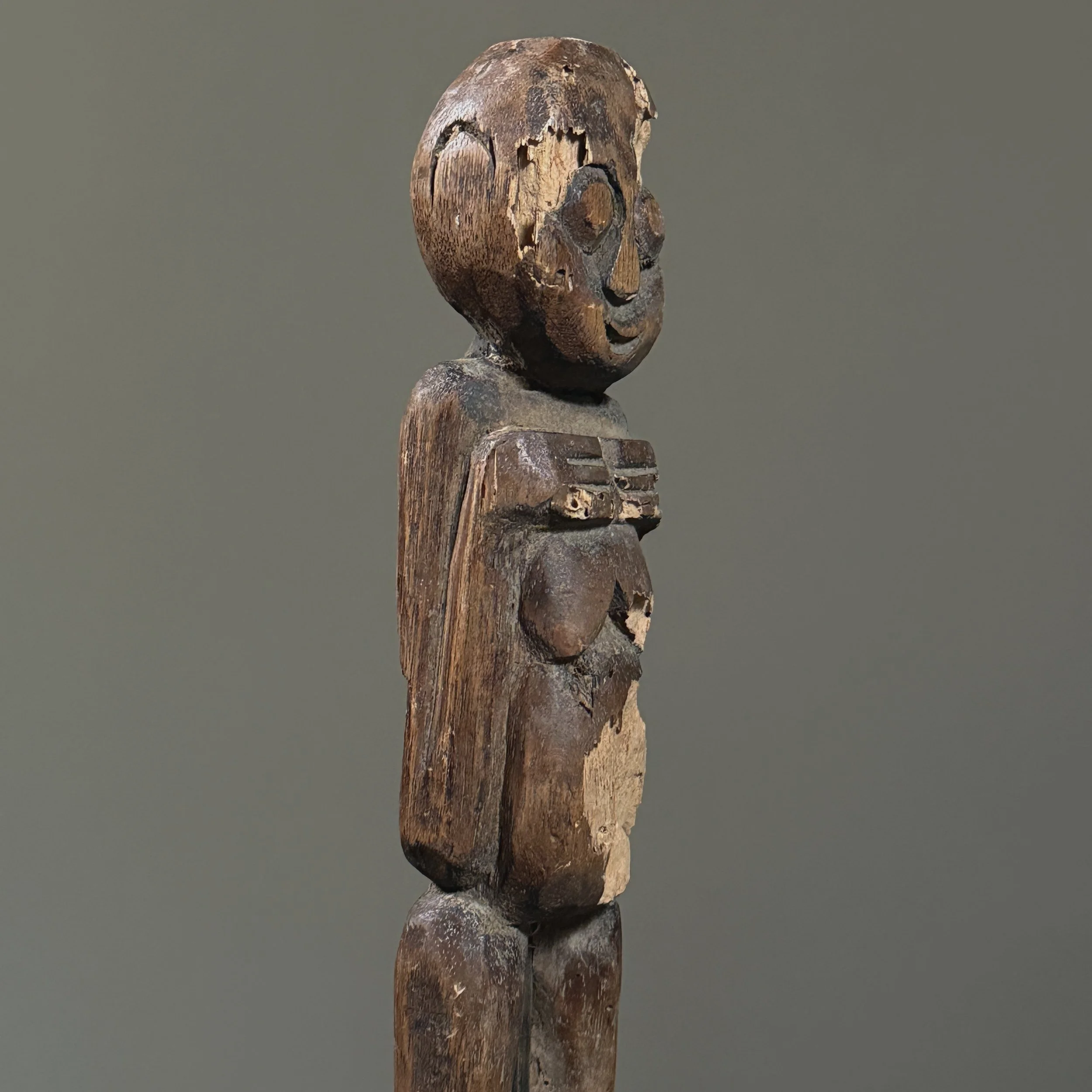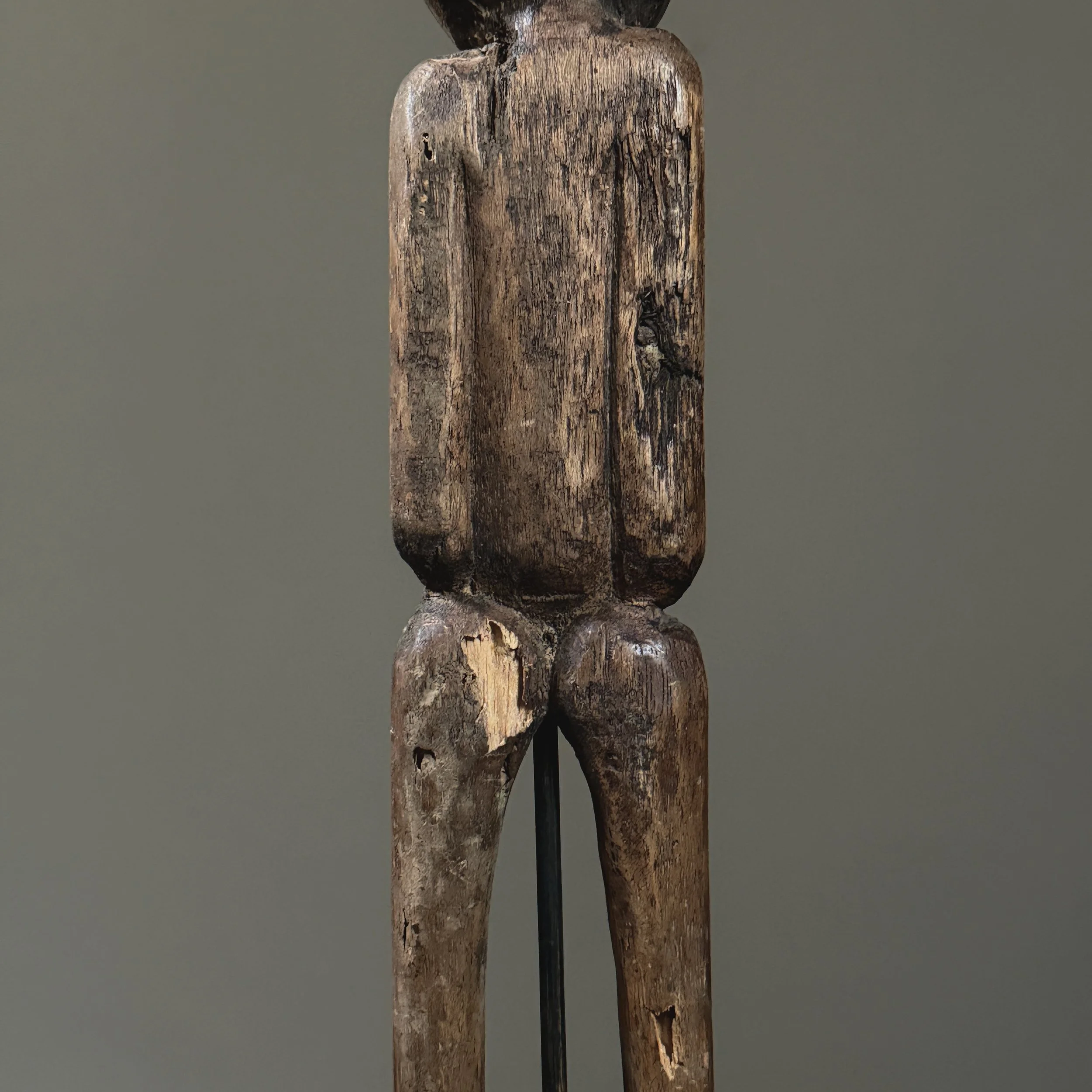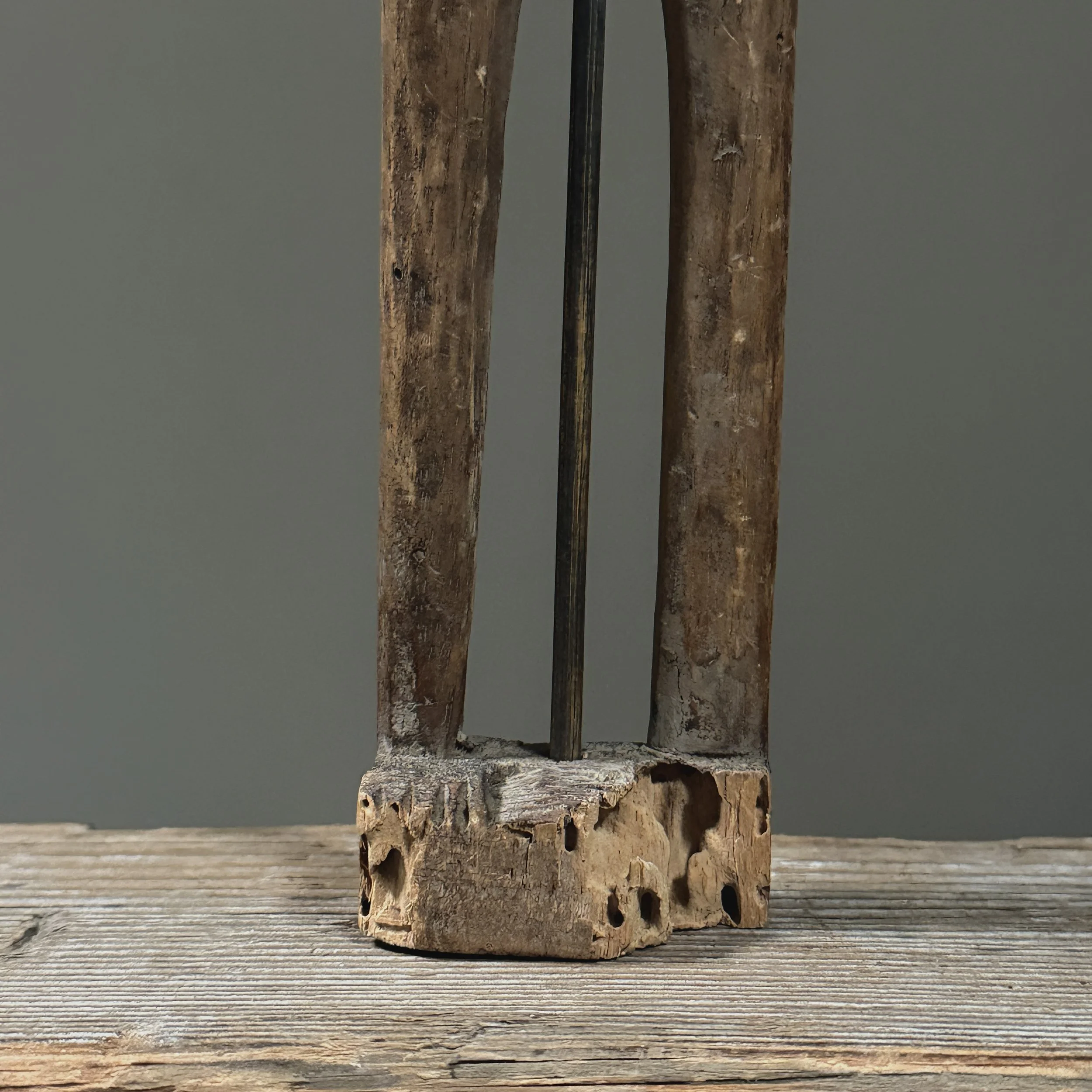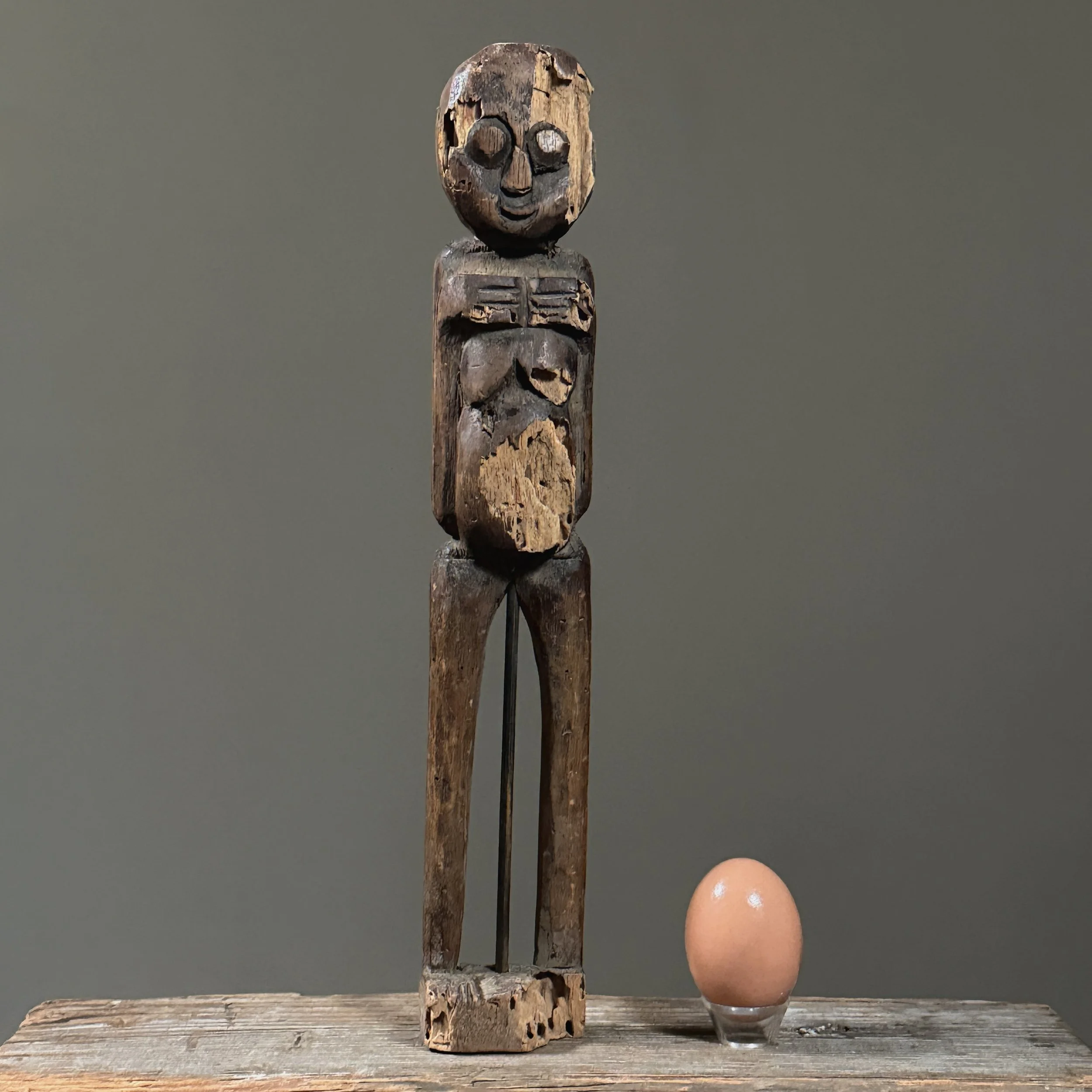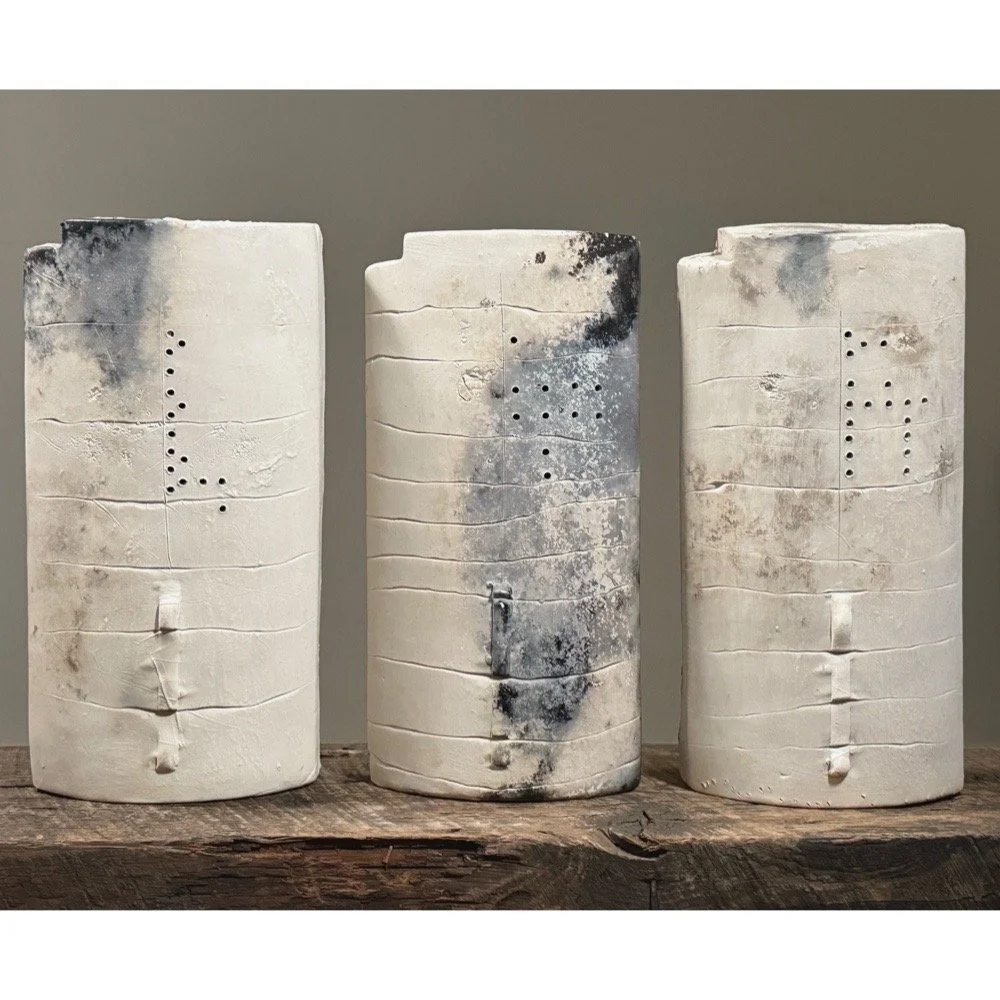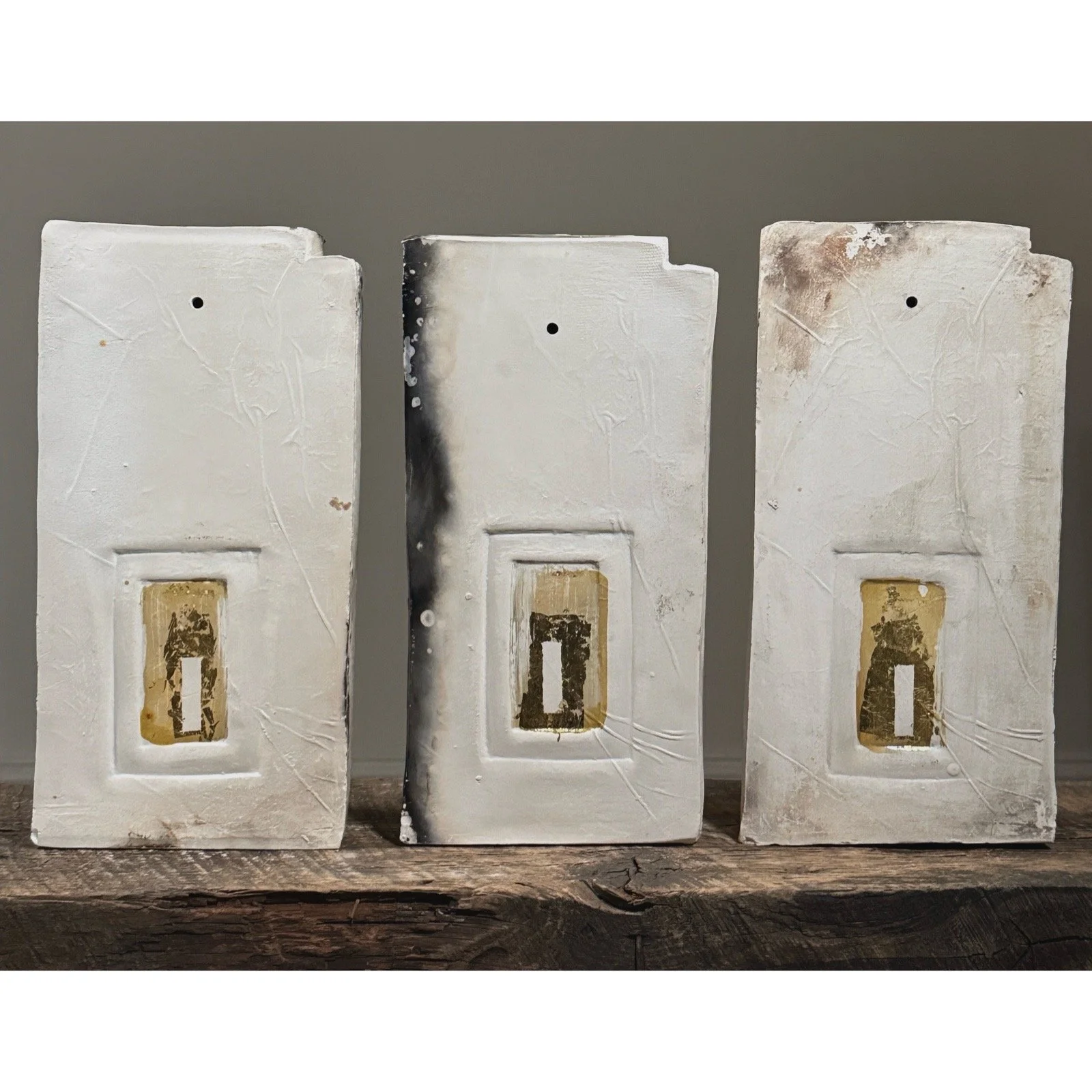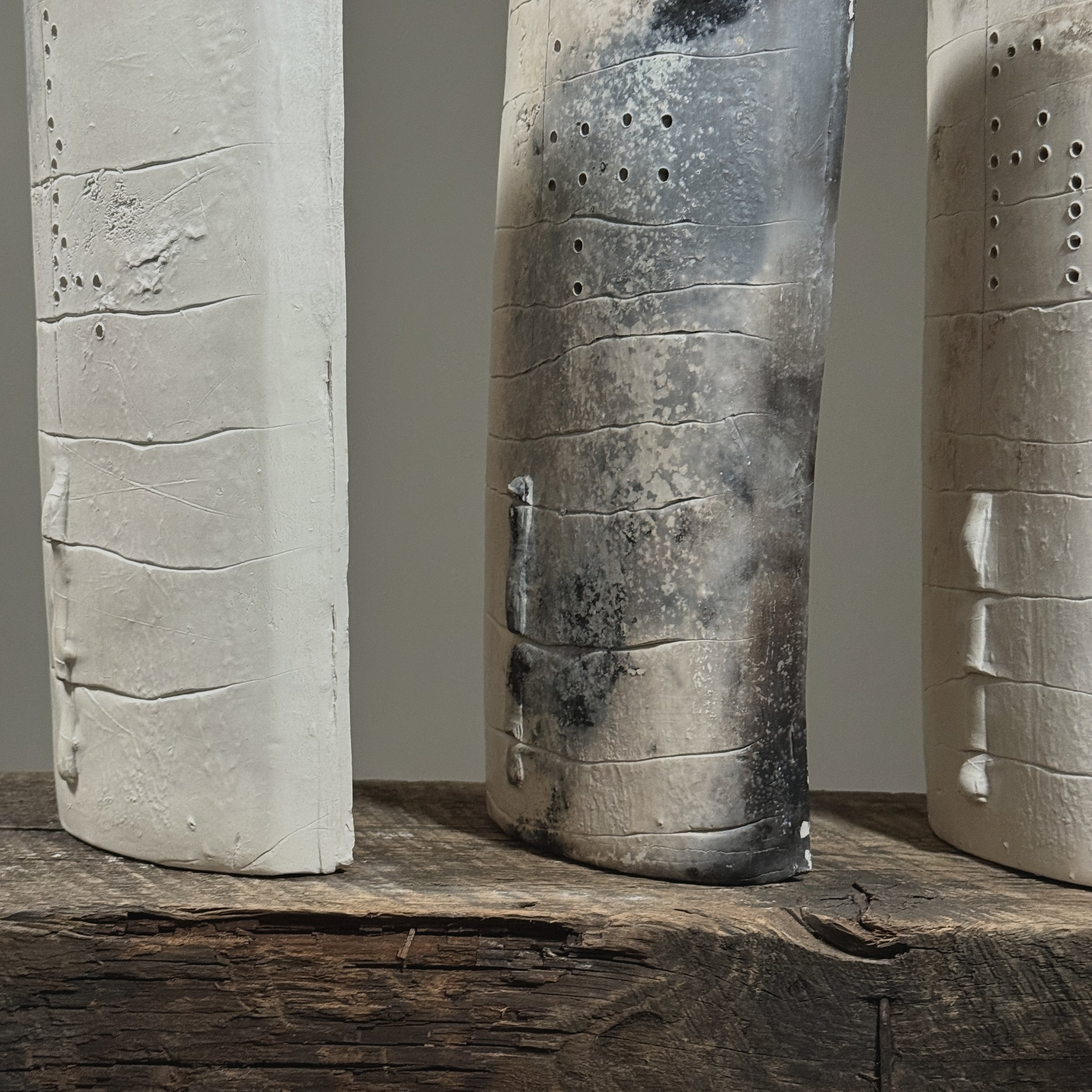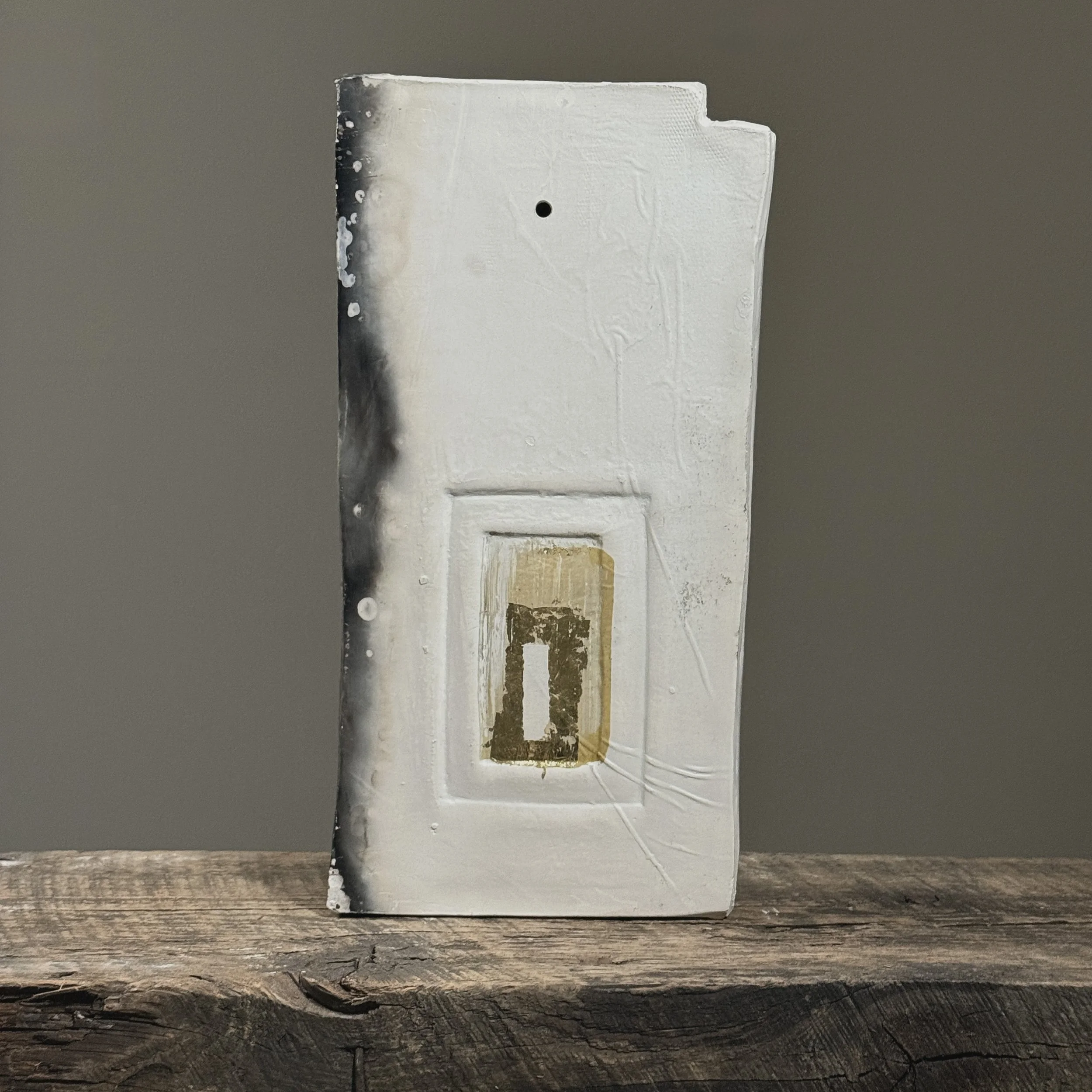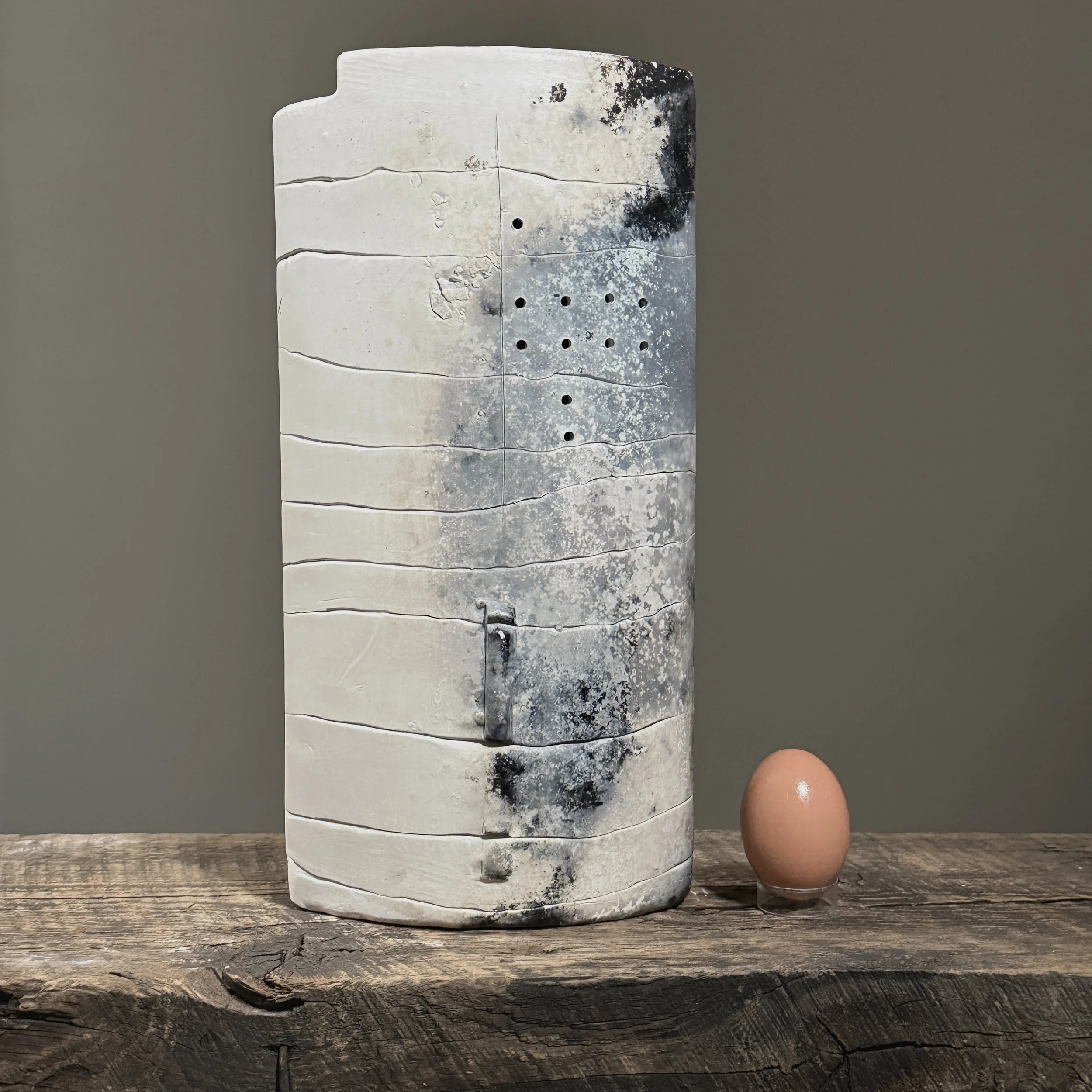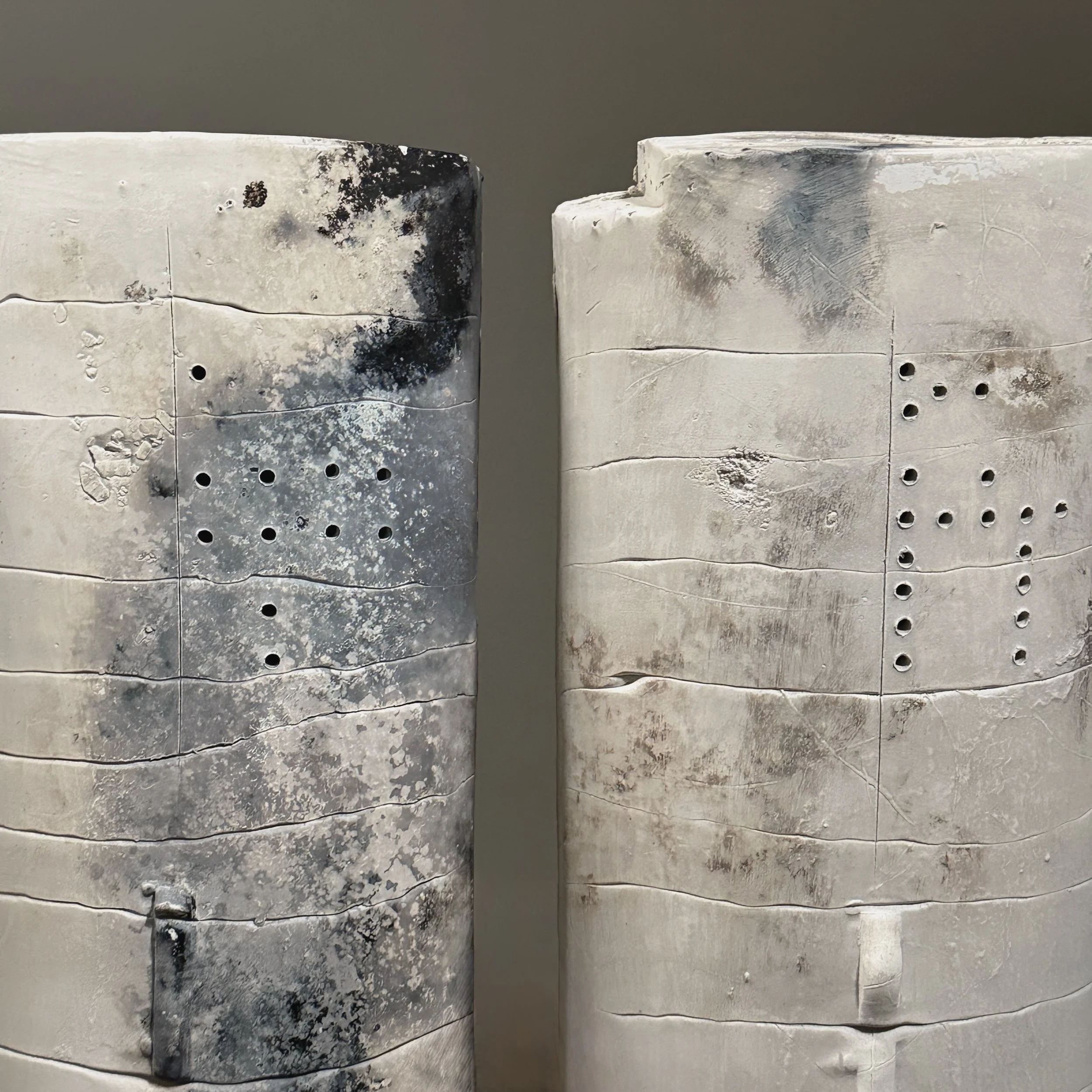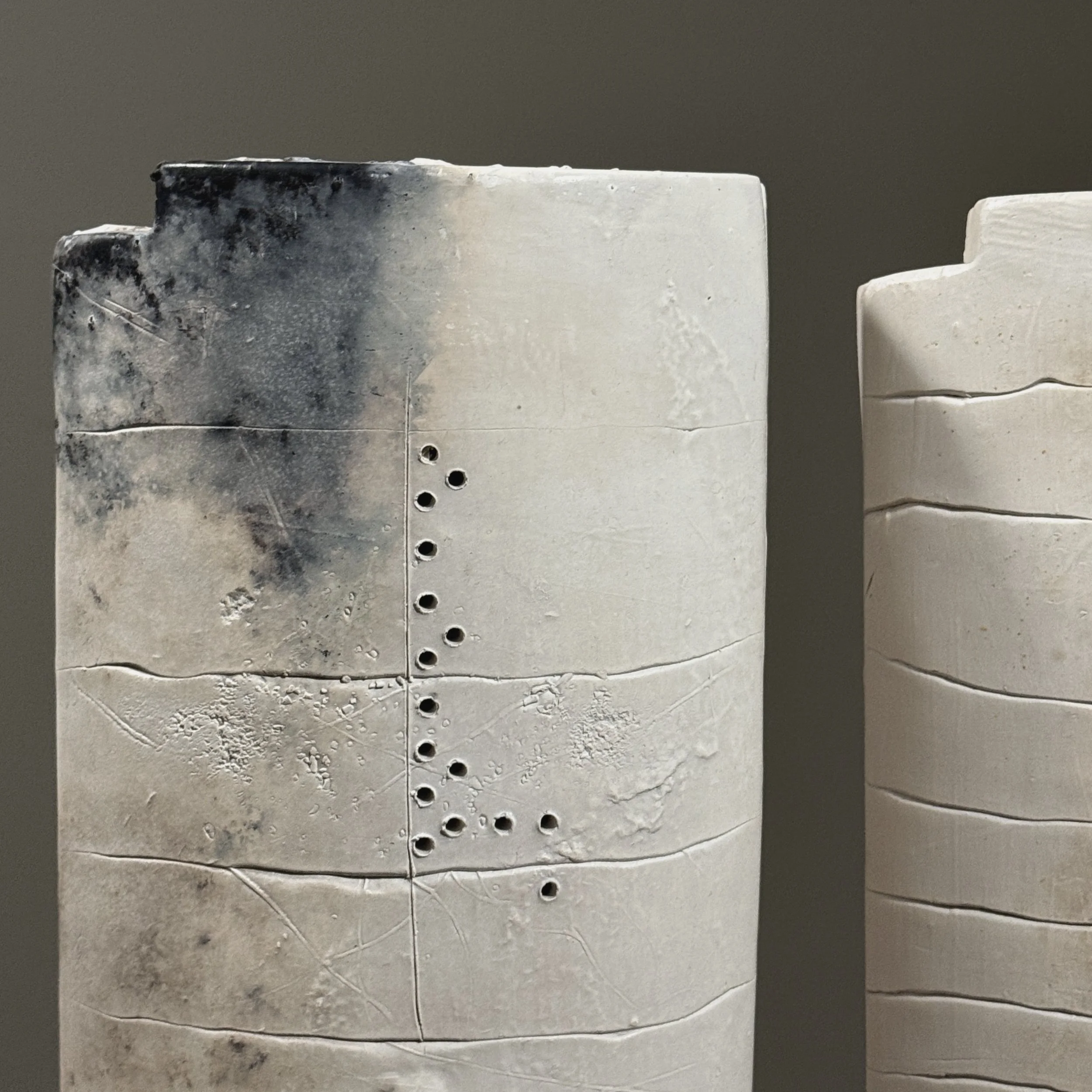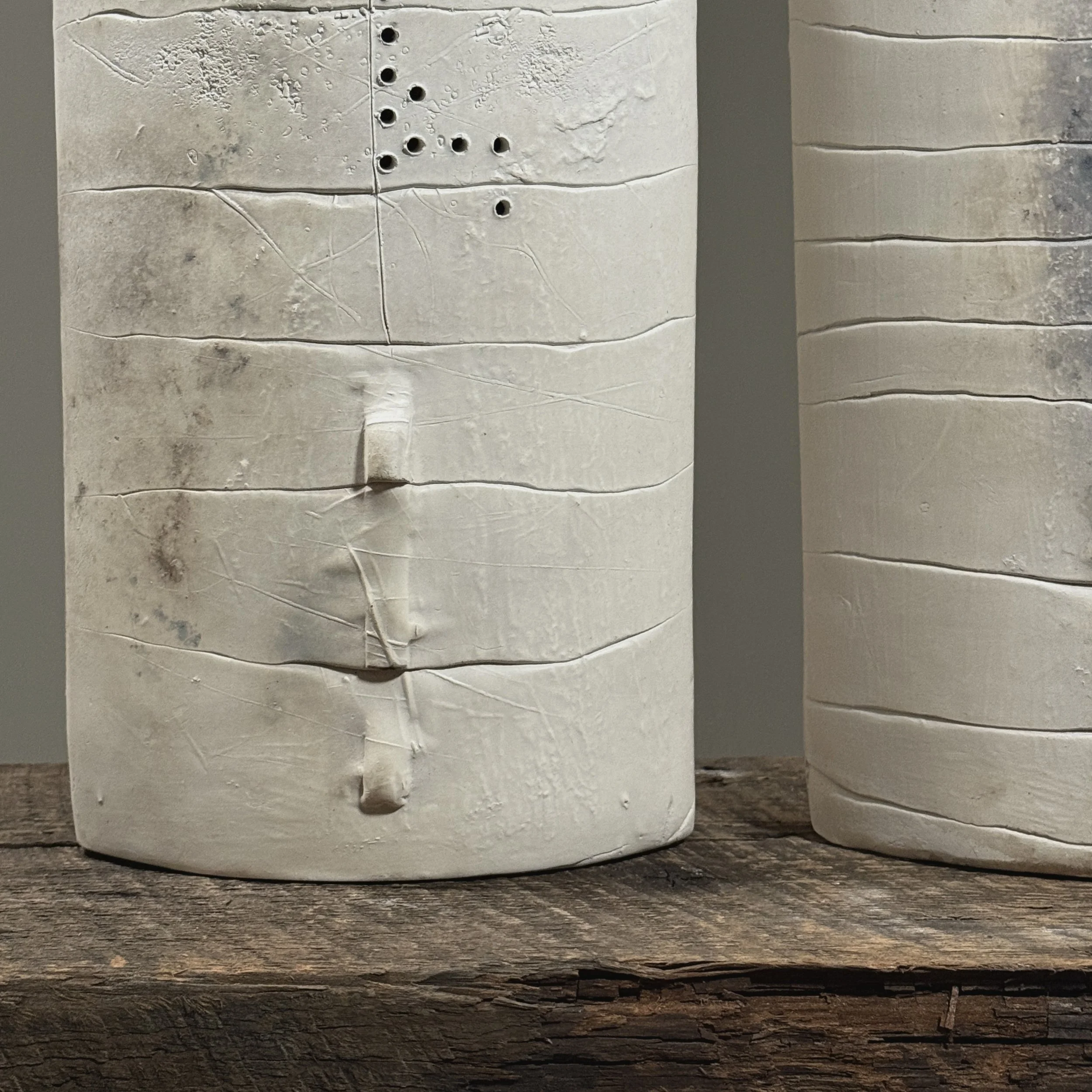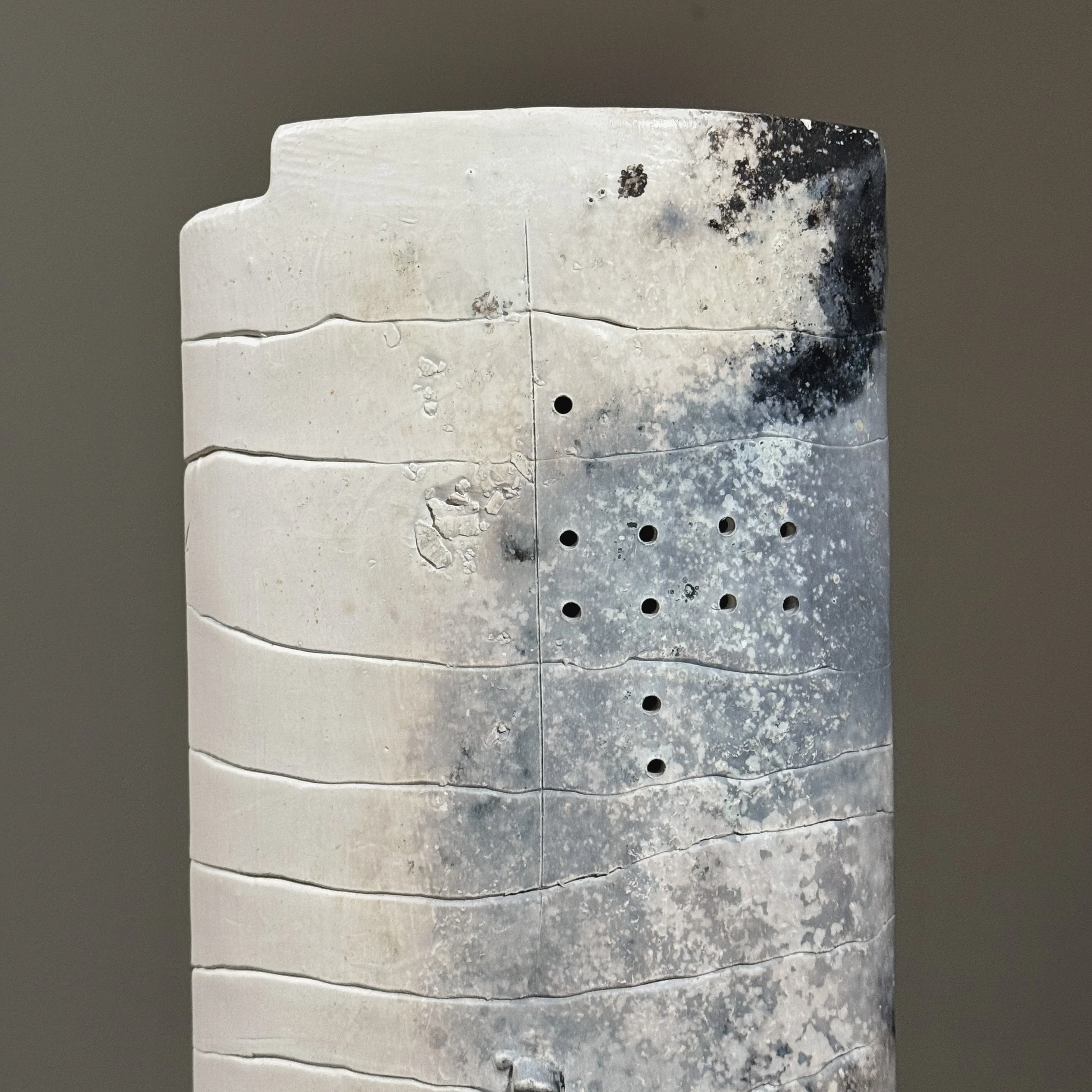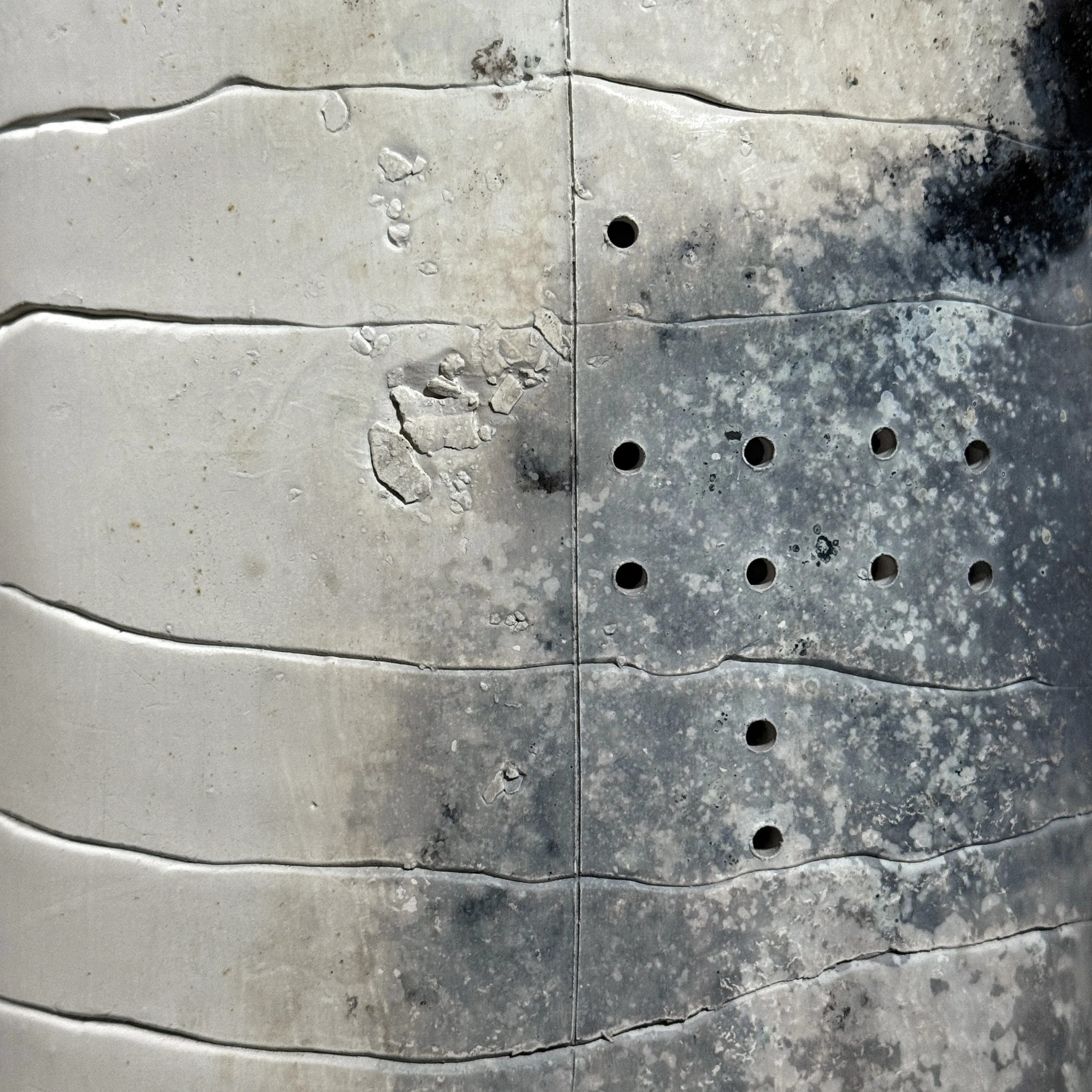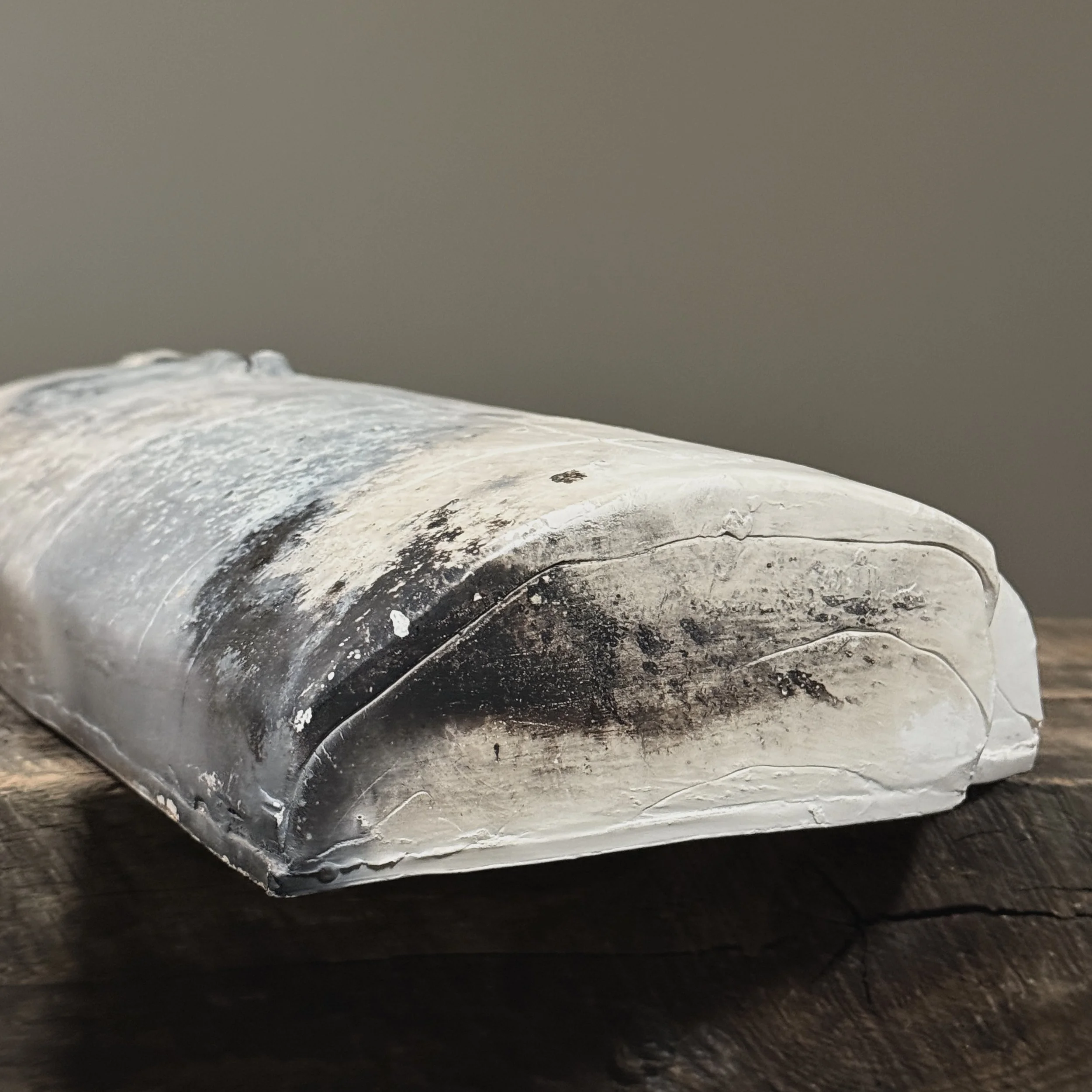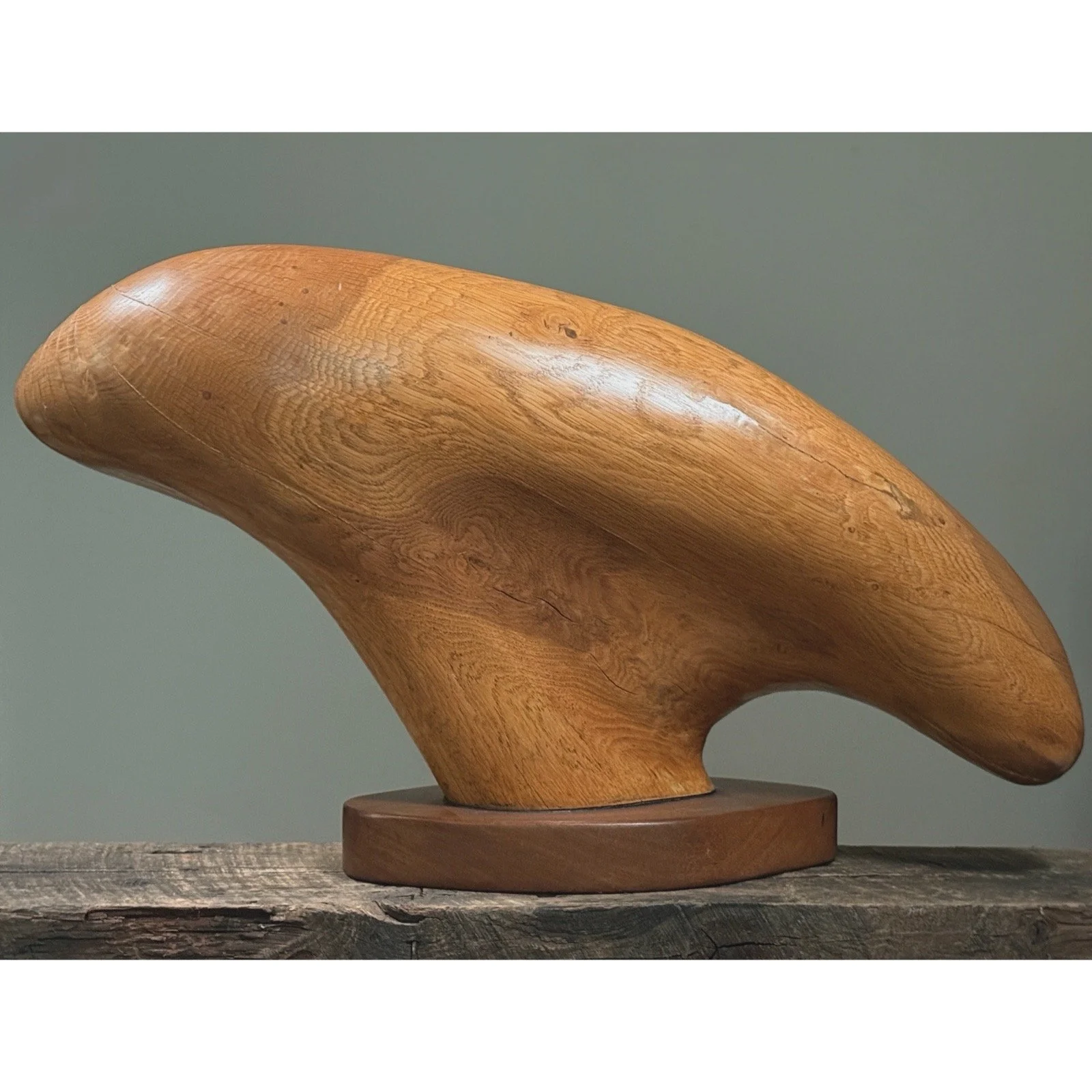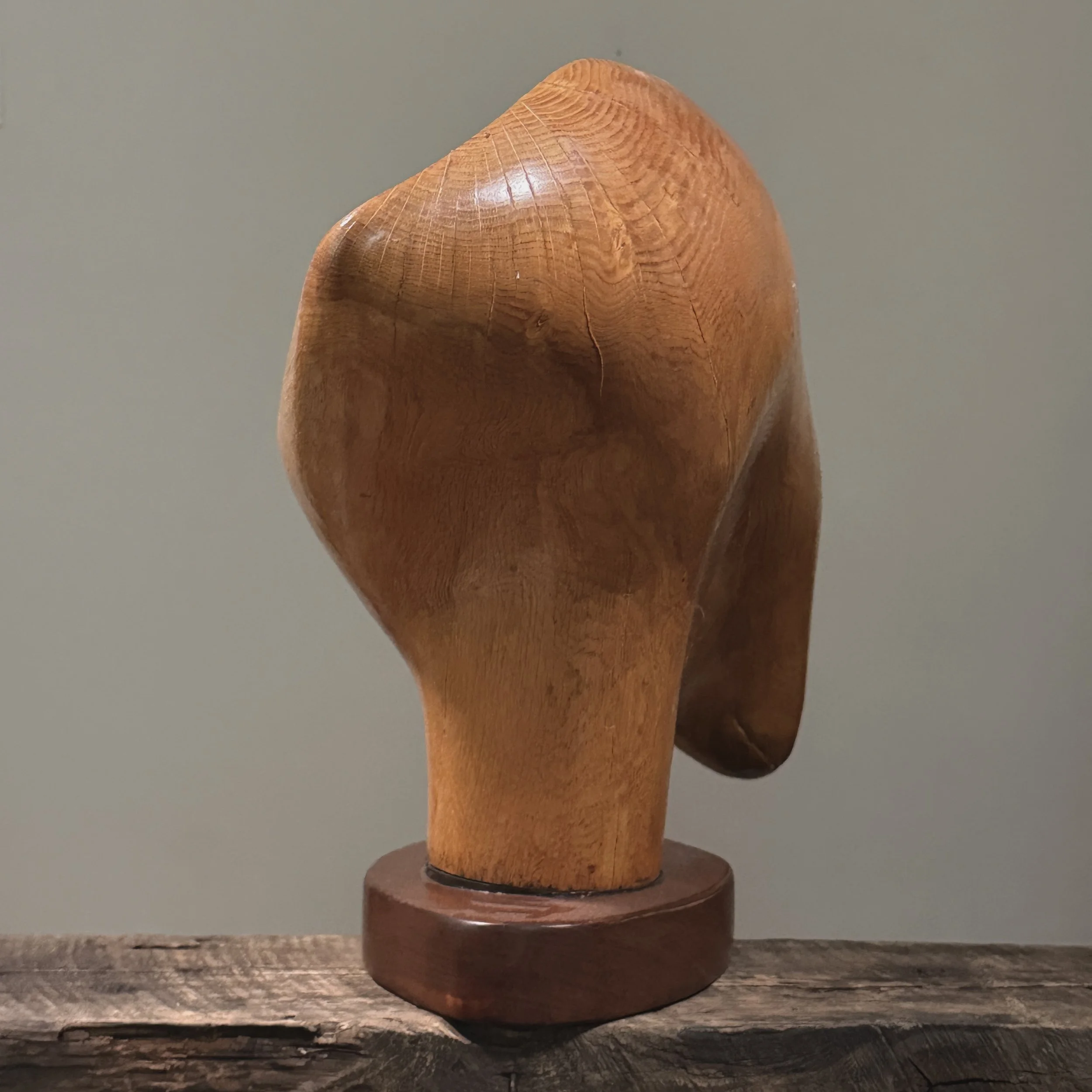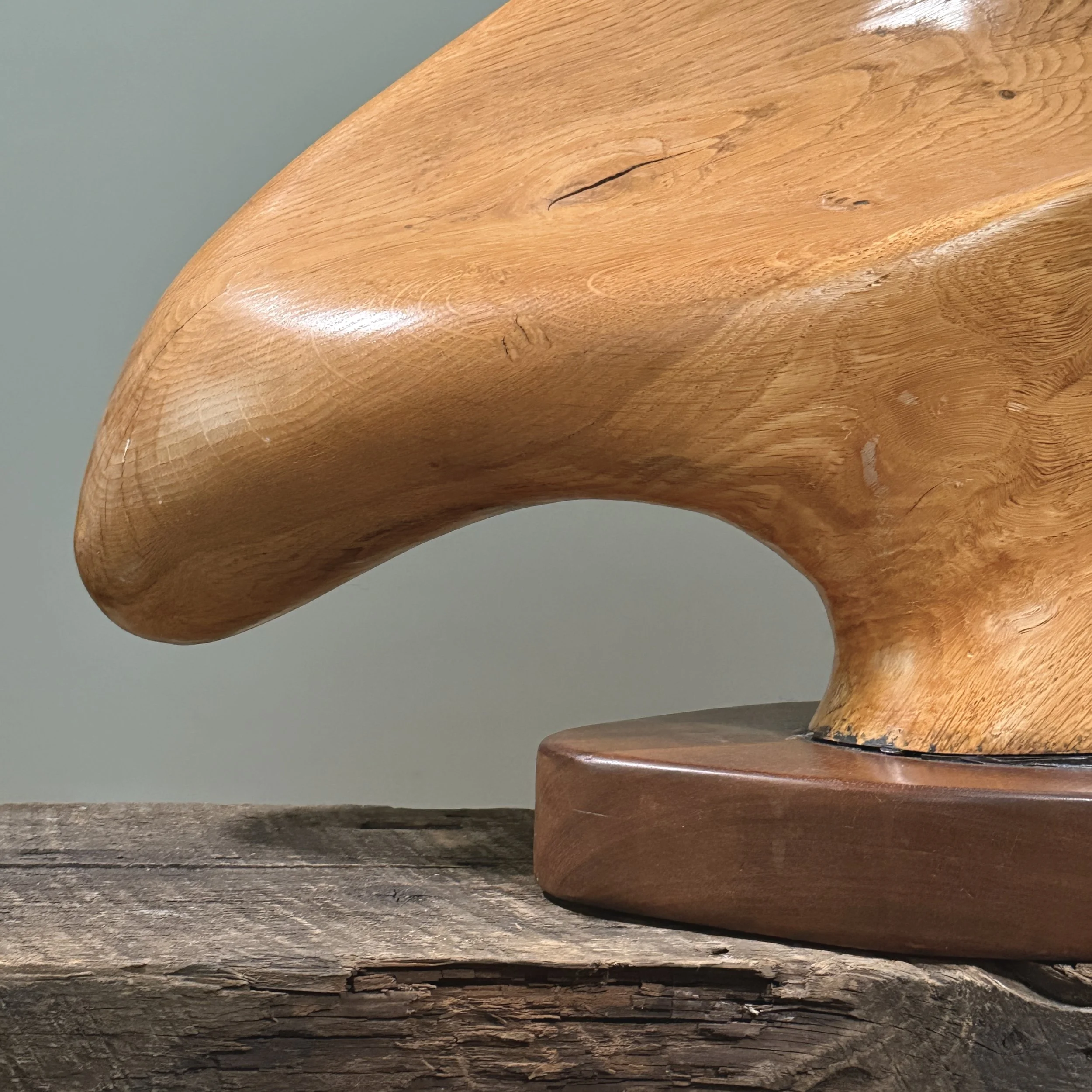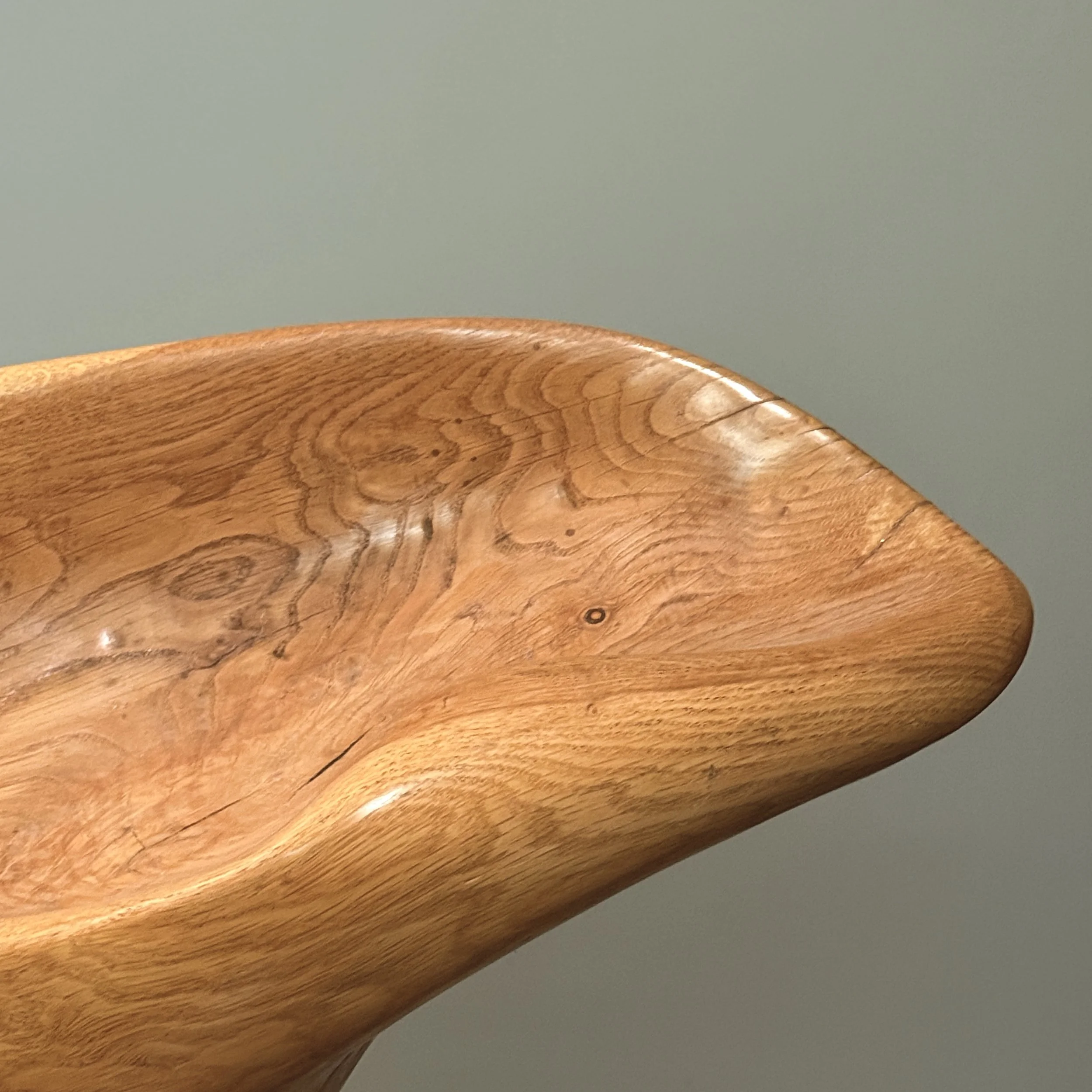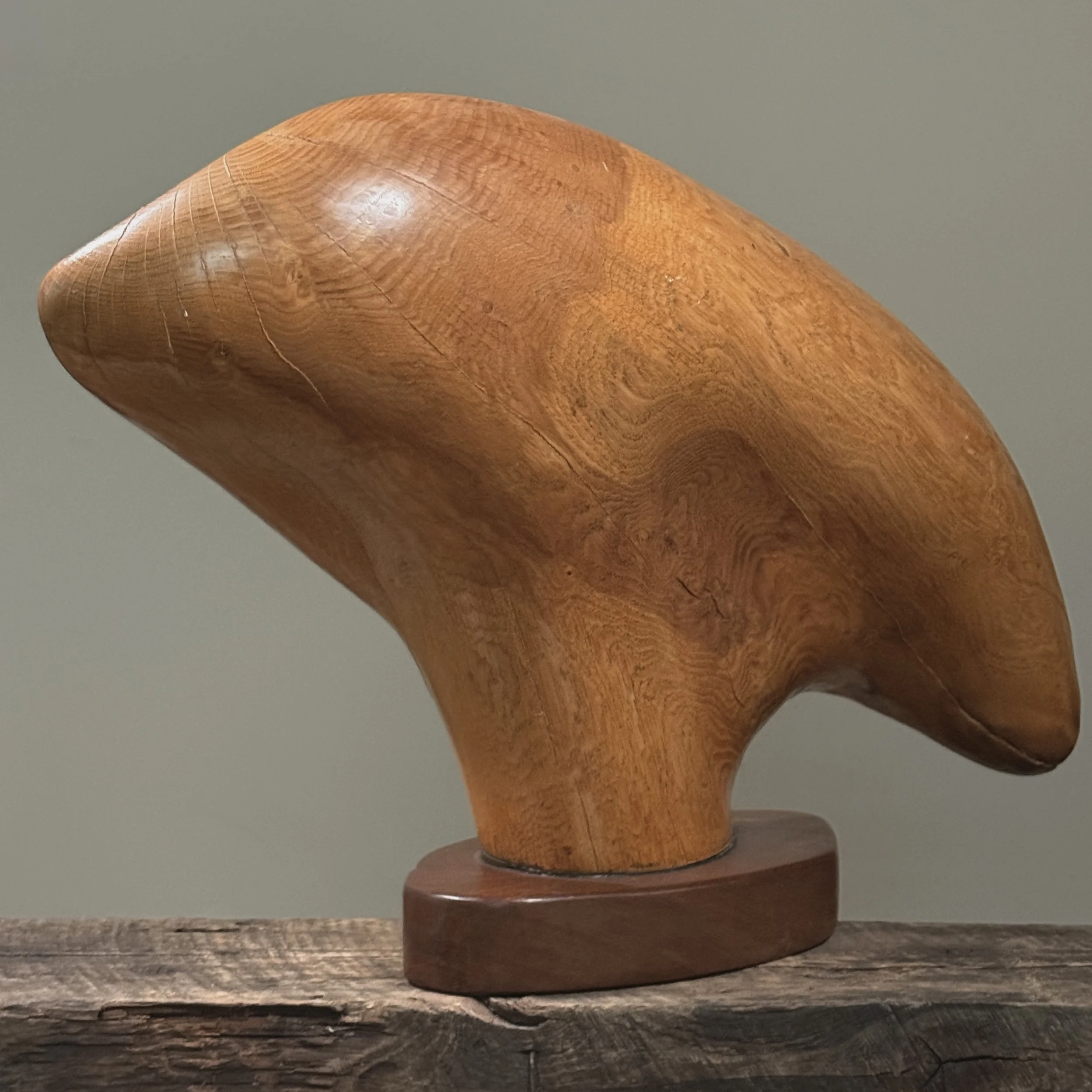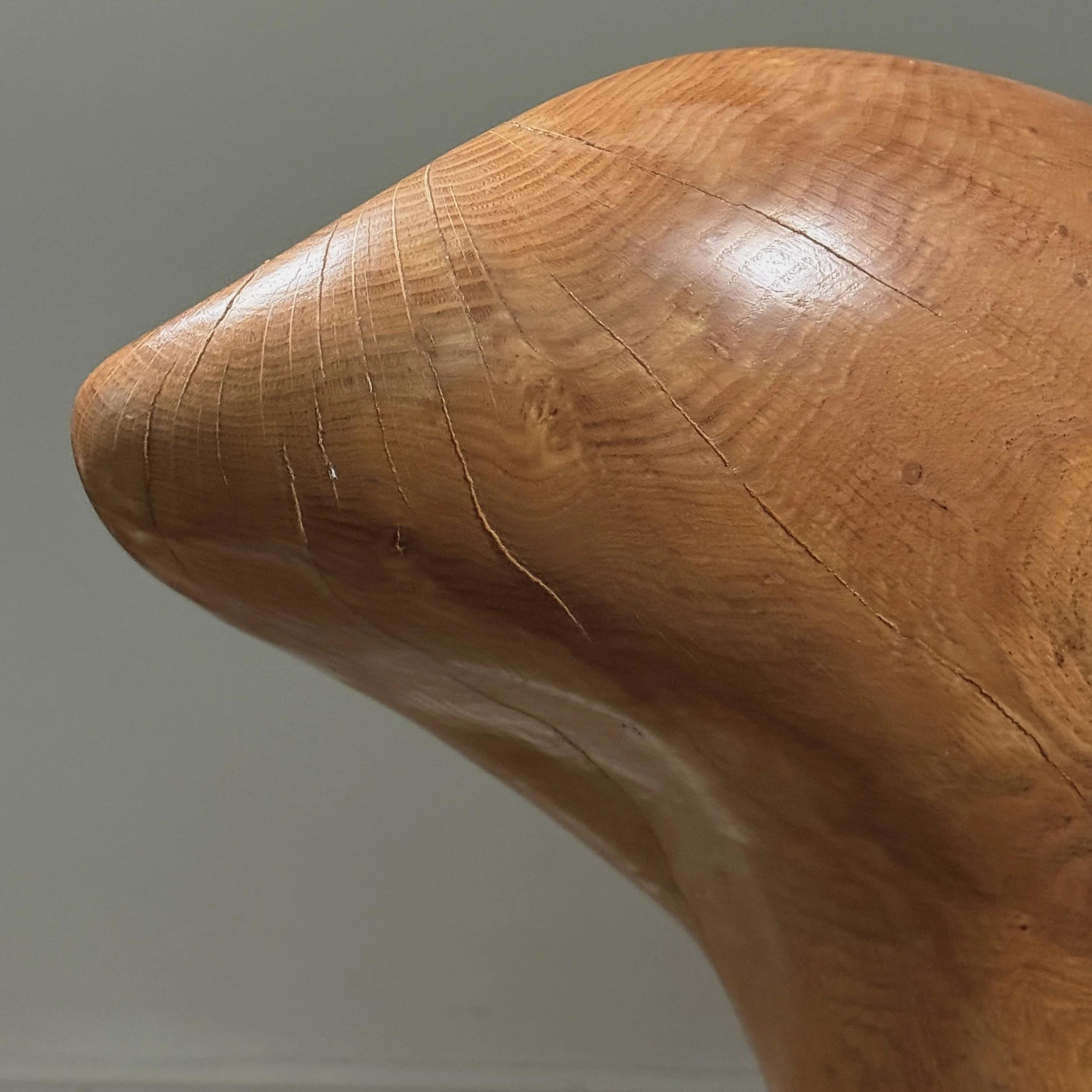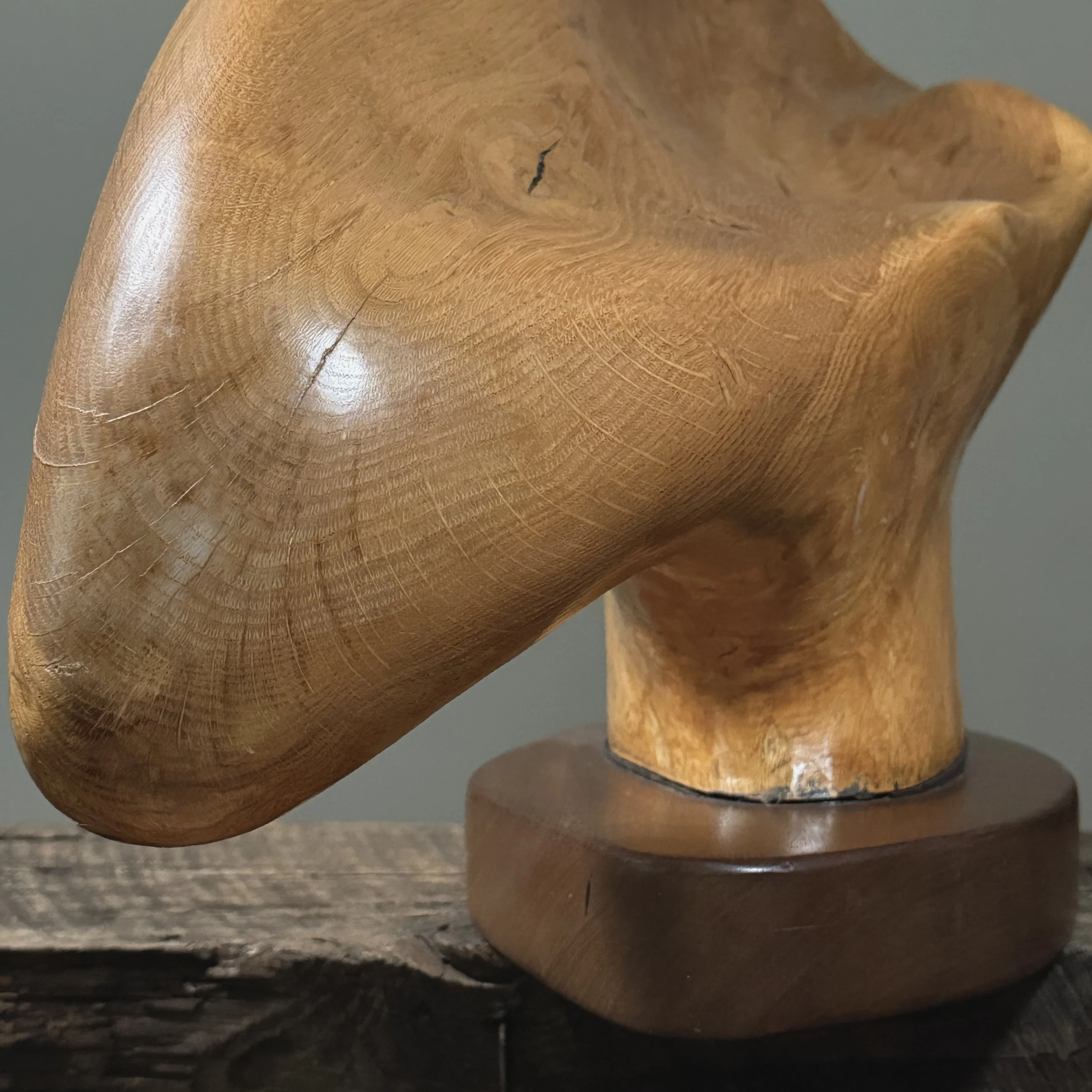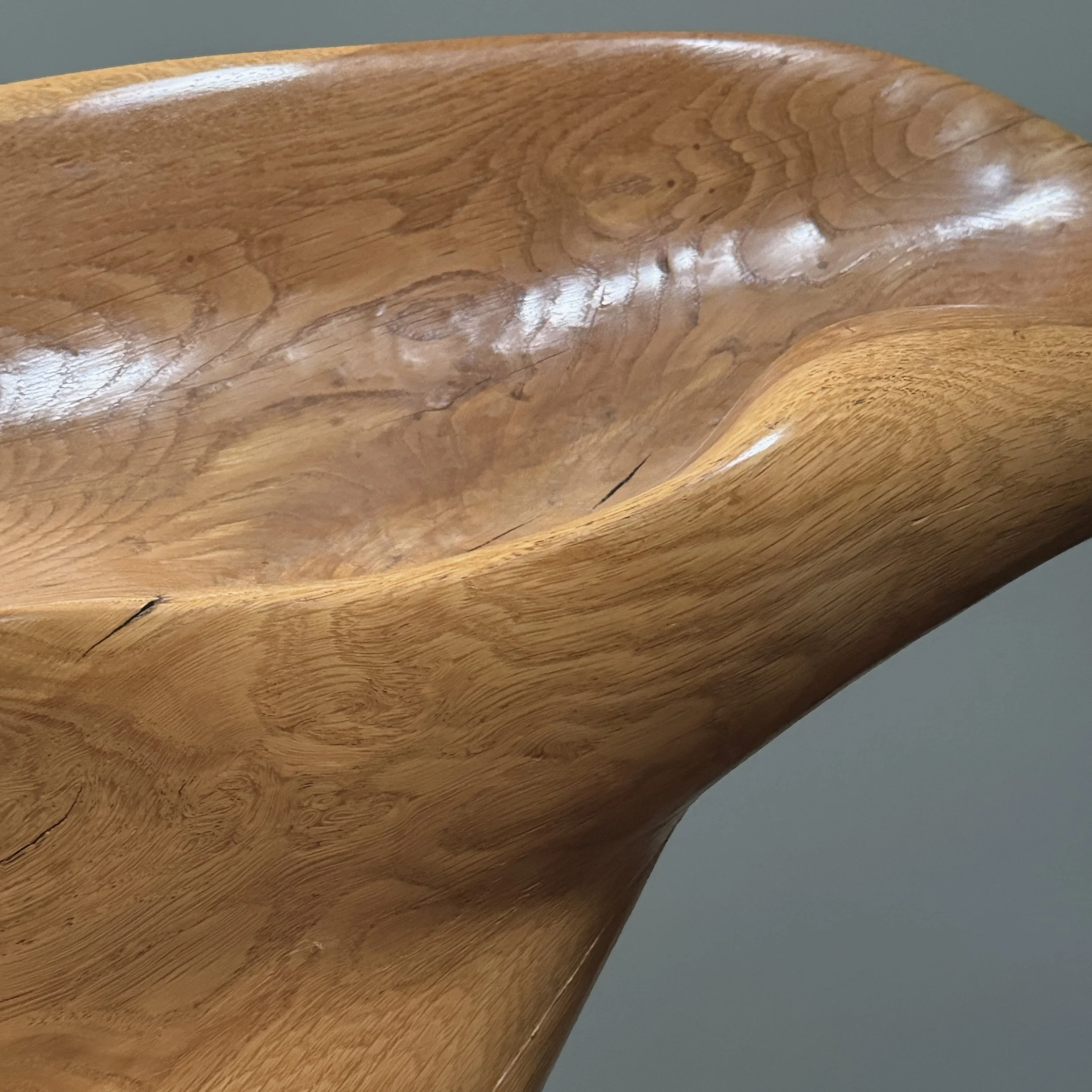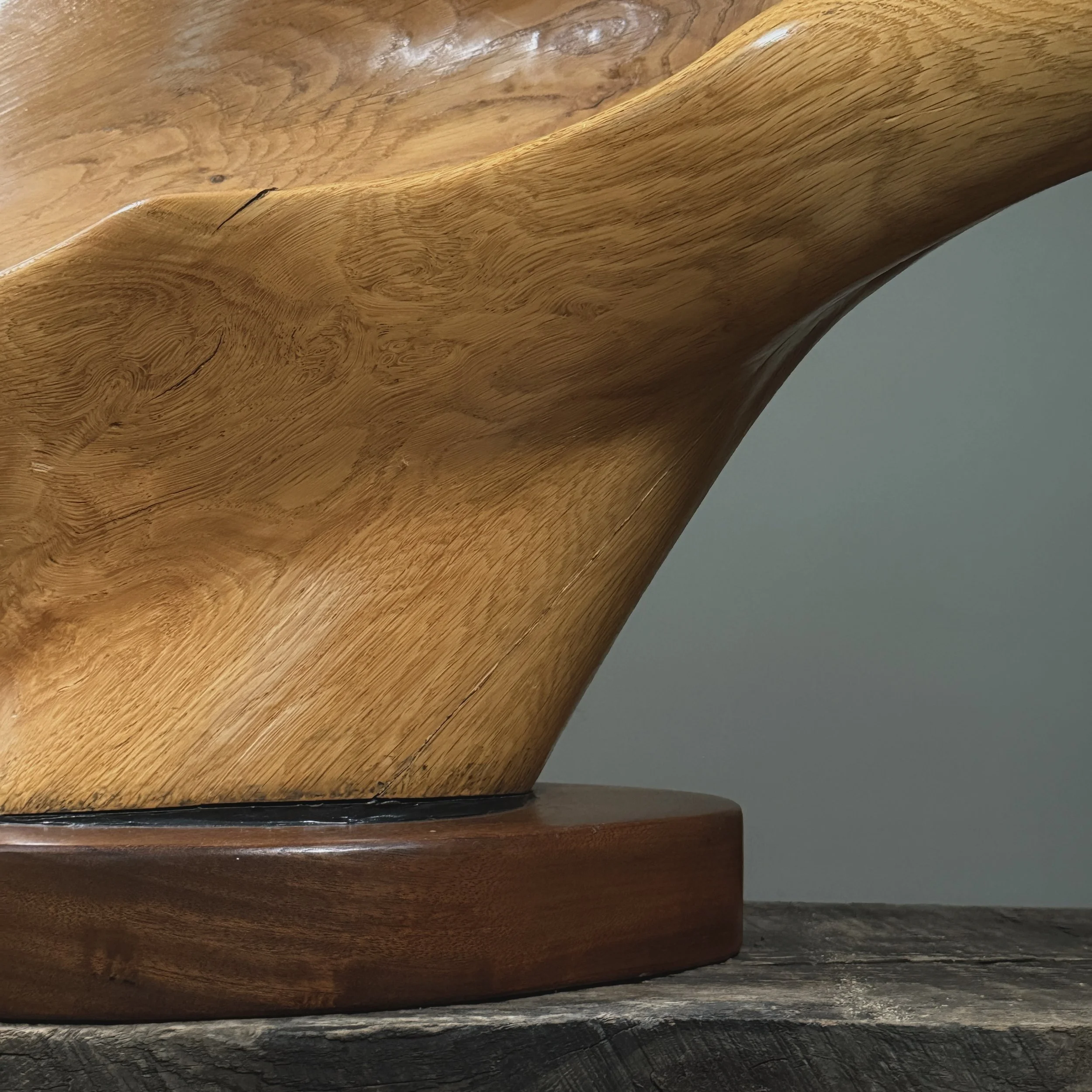 Image 1 of 14
Image 1 of 14

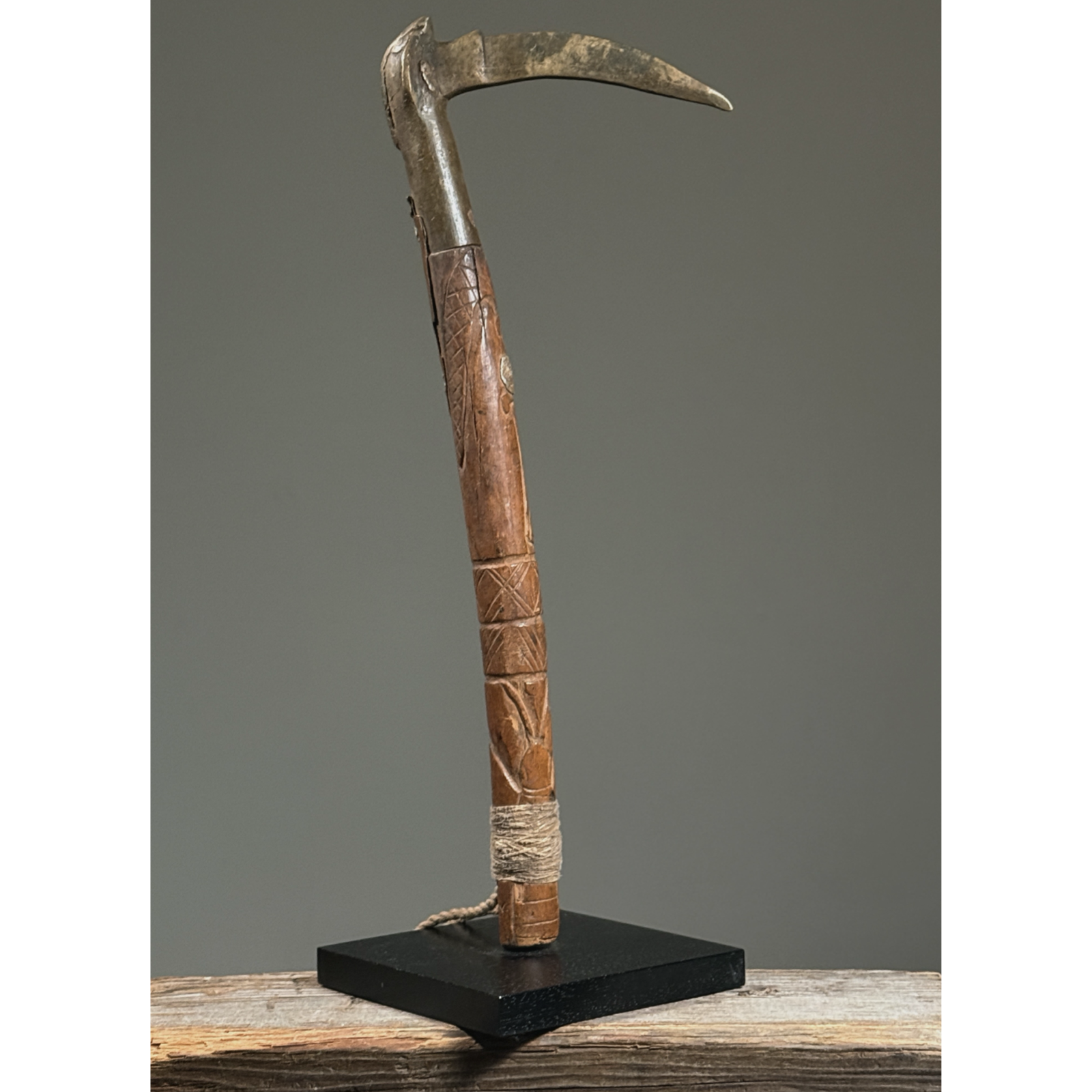 Image 2 of 14
Image 2 of 14

 Image 3 of 14
Image 3 of 14

 Image 4 of 14
Image 4 of 14

 Image 5 of 14
Image 5 of 14

 Image 6 of 14
Image 6 of 14

 Image 7 of 14
Image 7 of 14

 Image 8 of 14
Image 8 of 14

 Image 9 of 14
Image 9 of 14

 Image 10 of 14
Image 10 of 14

 Image 11 of 14
Image 11 of 14

 Image 12 of 14
Image 12 of 14

 Image 13 of 14
Image 13 of 14

 Image 14 of 14
Image 14 of 14















Rare Antique Voltaic Burkina Faso Ritual Scepter with Snake Head Blade on Custom Stand
Voltaic Burkina Faso Ceremonial Scepter with Zoomorphic Iconography – Late 19th to Early 20th Century
This ritual scepter, originating from the Voltaic cultural sphere of Burkina Faso, exemplifies the sophisticated metallurgical and sculptural traditions of West African ceremonial regalia. The piece is distinguished by its striking metal/brass blade, which terminates in a stylized serpent’s head—an iconographic motif frequently associated with spiritual authority, wisdom, and chthonic power in many indigenous Sahelian belief systems.
The carved hardwood handle displays two finely executed zoomorphic carvings: a crocodile near the blade, likely symbolizing strength and ancestral guardianship, and a moth or insect at the base, possibly representing transformation or the liminal realm between the physical and spiritual worlds. The lower grip is traditionally bound with woven plant fiber, a technique common among Burkina Faso’s Lobi, Dagara, or Gurunsi artisans, reinforcing both structural integrity and ritual significance.
Construction reveals advanced craftsmanship: the blade is affixed via a forged metal strip along the dorsal axis, while a small, enigmatic insignia adorns the anterior handle—perhaps denoting lineage, rank, or ceremonial function. The blade’s superior metallurgical refinement and artistic precision suggest this was no ordinary implement but rather a prestige object commissioned for a high-ranking dignitary, diviner, or warrior-elite.
Presented on a custom ebonized wood display stand, the scepter exhibits an authentic patina with minor age-related wear, consistent with pre-colonial ritual use. Stylistically, it aligns with late 19th-century Voltaic metalworking traditions, where non-ferrous alloys were reserved for objects of spiritual and political importance.
Dimensions: 19” H × 7.25” W × 7.5” D
Provenance: Surface wear and oxidation patterns suggest prolonged ceremonial handling; comparable examples appear in the Musée National du Burkina Faso.
Provenance: Thomas G.D. Wheelock, New York
Thomas G.D. Wheelock was a dedicated collector of African art, with a particular focus on the artistic traditions of Burkina Faso. His mission extended beyond mere acquisition; he sought to both celebrate and preserve the rich cultural heritage of the region. Wheelock placed great value on the relationships he cultivated with local artists and communities, often traveling to Africa to engage directly with them. His efforts resulted in a profound connection to the cultural practices and artistic expressions of the region.
Wheelock’s collection, amassed over more than thirty years, grew to include over 1,700 pieces, making it one of the most extensive and significant collections of its kind. Four of these works are now part of the permanent collection at the Metropolitan Museum of Art in New York City, while other pieces have been loaned to prestigious institutions, including the High Museum in Atlanta.
The importance of Wheelock’s collection was further cemented with the publication of the rare and influential book, Land of the Flying Masks: Art and Culture in Burkina Faso; The Thomas G.B. Wheelock Collection. This publication highlights hundreds of exceptional works from the Nuna, Bwa, Bobo, and Mossi peoples, as well as notable pieces from the Lobi, Gurunsi, Winiama, and Lela communities. Through his collection and its documentation, Wheelock has left an enduring legacy that continues to honor and preserve the artistic traditions of Burkina Faso.
Voltaic Burkina Faso Ceremonial Scepter with Zoomorphic Iconography – Late 19th to Early 20th Century
This ritual scepter, originating from the Voltaic cultural sphere of Burkina Faso, exemplifies the sophisticated metallurgical and sculptural traditions of West African ceremonial regalia. The piece is distinguished by its striking metal/brass blade, which terminates in a stylized serpent’s head—an iconographic motif frequently associated with spiritual authority, wisdom, and chthonic power in many indigenous Sahelian belief systems.
The carved hardwood handle displays two finely executed zoomorphic carvings: a crocodile near the blade, likely symbolizing strength and ancestral guardianship, and a moth or insect at the base, possibly representing transformation or the liminal realm between the physical and spiritual worlds. The lower grip is traditionally bound with woven plant fiber, a technique common among Burkina Faso’s Lobi, Dagara, or Gurunsi artisans, reinforcing both structural integrity and ritual significance.
Construction reveals advanced craftsmanship: the blade is affixed via a forged metal strip along the dorsal axis, while a small, enigmatic insignia adorns the anterior handle—perhaps denoting lineage, rank, or ceremonial function. The blade’s superior metallurgical refinement and artistic precision suggest this was no ordinary implement but rather a prestige object commissioned for a high-ranking dignitary, diviner, or warrior-elite.
Presented on a custom ebonized wood display stand, the scepter exhibits an authentic patina with minor age-related wear, consistent with pre-colonial ritual use. Stylistically, it aligns with late 19th-century Voltaic metalworking traditions, where non-ferrous alloys were reserved for objects of spiritual and political importance.
Dimensions: 19” H × 7.25” W × 7.5” D
Provenance: Surface wear and oxidation patterns suggest prolonged ceremonial handling; comparable examples appear in the Musée National du Burkina Faso.
Provenance: Thomas G.D. Wheelock, New York
Thomas G.D. Wheelock was a dedicated collector of African art, with a particular focus on the artistic traditions of Burkina Faso. His mission extended beyond mere acquisition; he sought to both celebrate and preserve the rich cultural heritage of the region. Wheelock placed great value on the relationships he cultivated with local artists and communities, often traveling to Africa to engage directly with them. His efforts resulted in a profound connection to the cultural practices and artistic expressions of the region.
Wheelock’s collection, amassed over more than thirty years, grew to include over 1,700 pieces, making it one of the most extensive and significant collections of its kind. Four of these works are now part of the permanent collection at the Metropolitan Museum of Art in New York City, while other pieces have been loaned to prestigious institutions, including the High Museum in Atlanta.
The importance of Wheelock’s collection was further cemented with the publication of the rare and influential book, Land of the Flying Masks: Art and Culture in Burkina Faso; The Thomas G.B. Wheelock Collection. This publication highlights hundreds of exceptional works from the Nuna, Bwa, Bobo, and Mossi peoples, as well as notable pieces from the Lobi, Gurunsi, Winiama, and Lela communities. Through his collection and its documentation, Wheelock has left an enduring legacy that continues to honor and preserve the artistic traditions of Burkina Faso.


